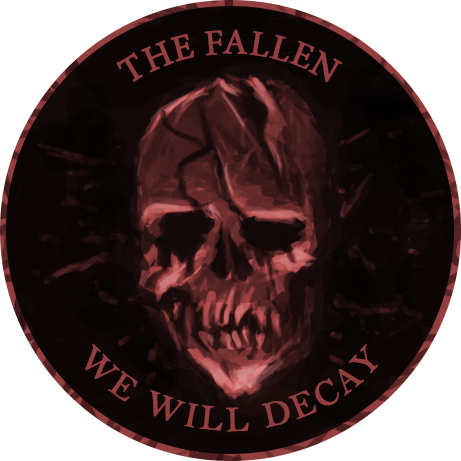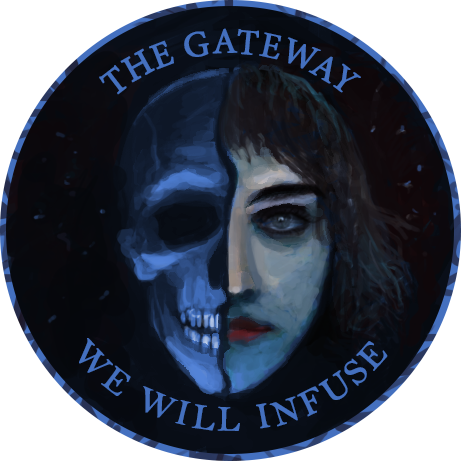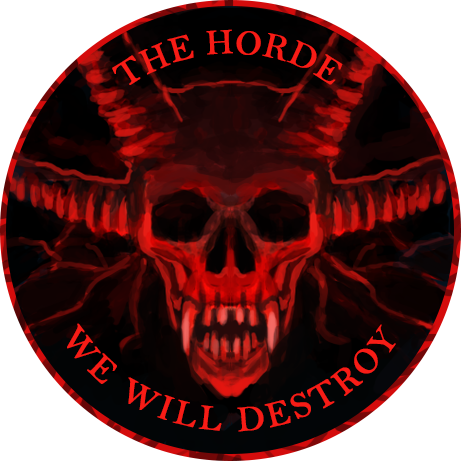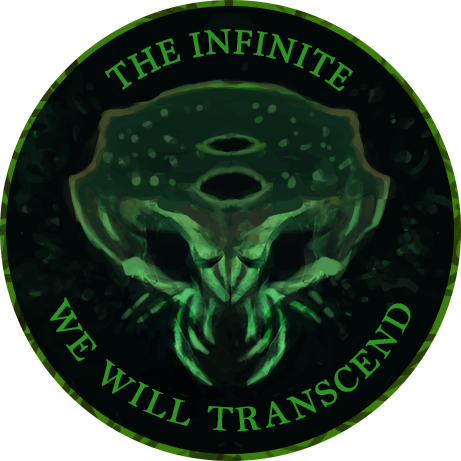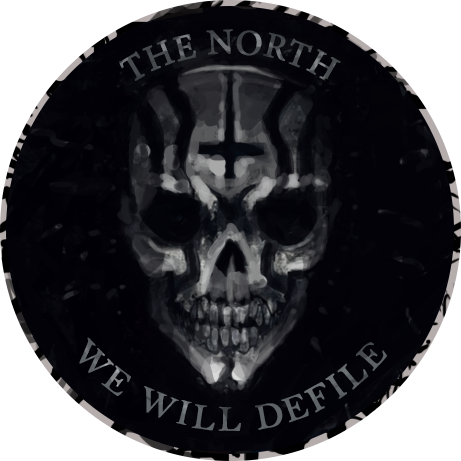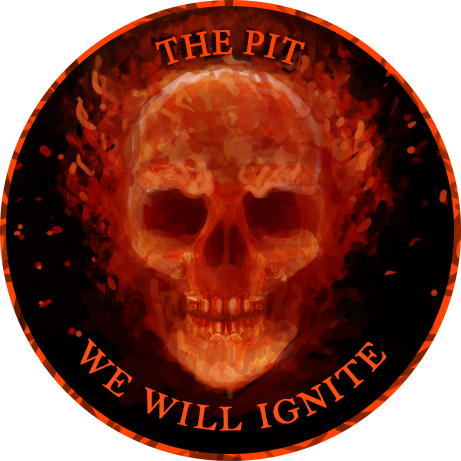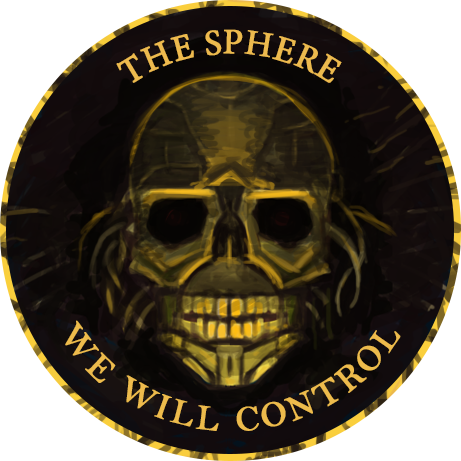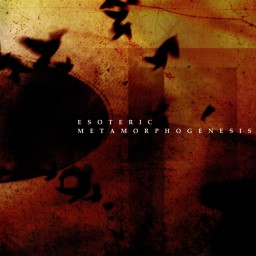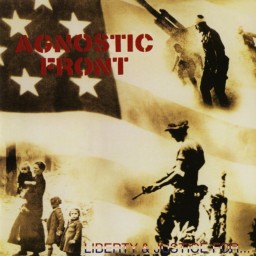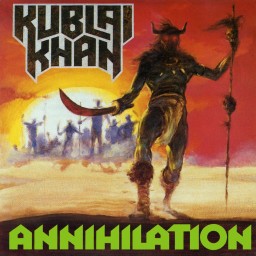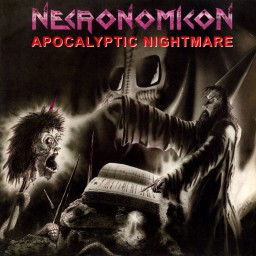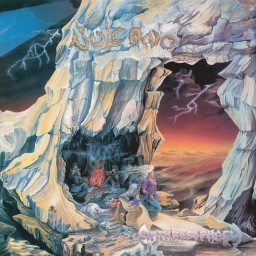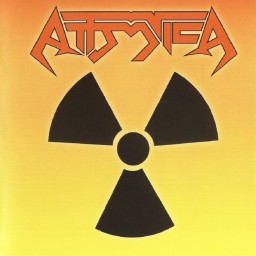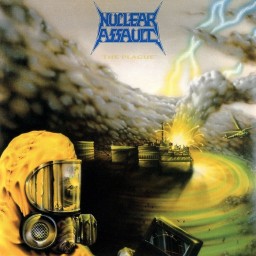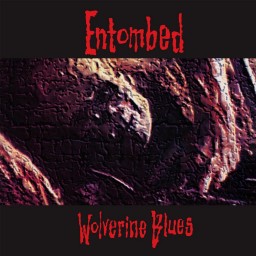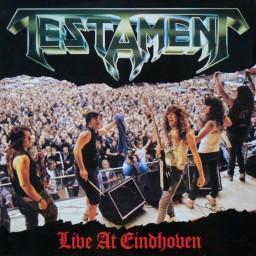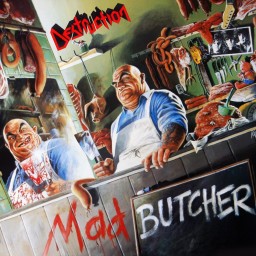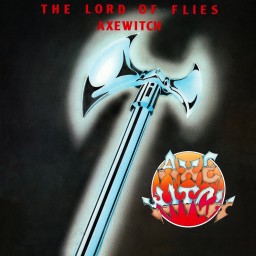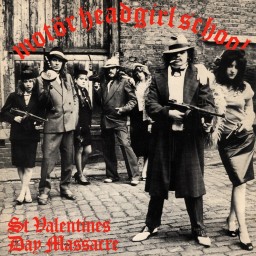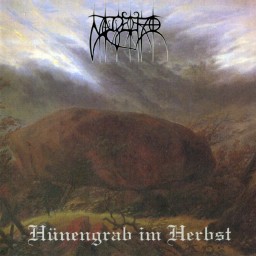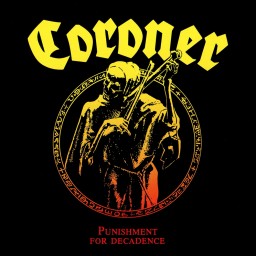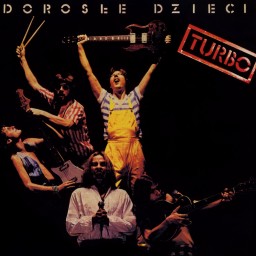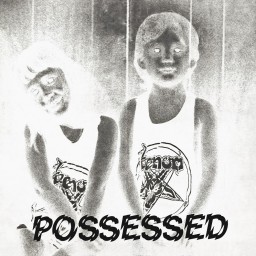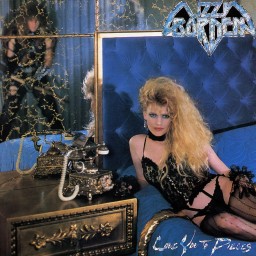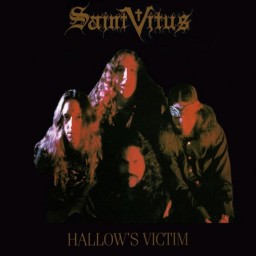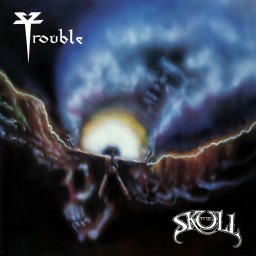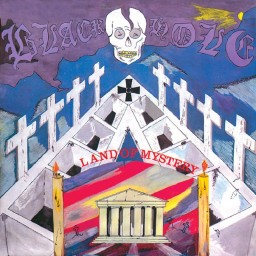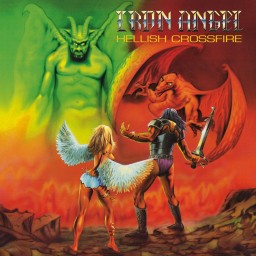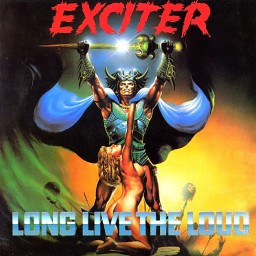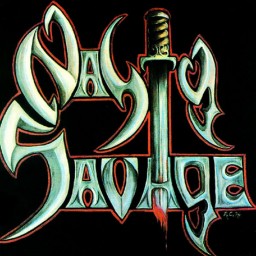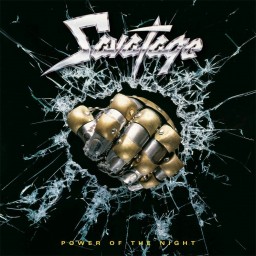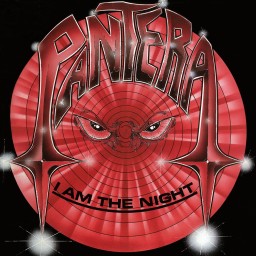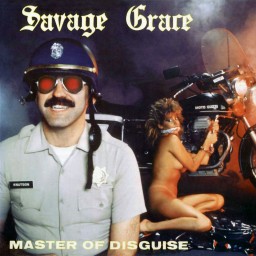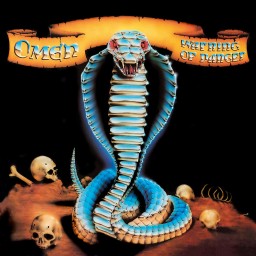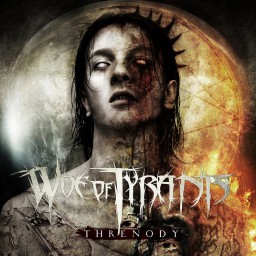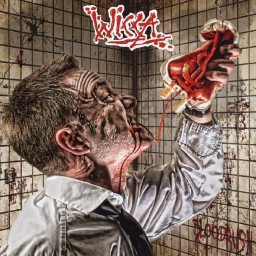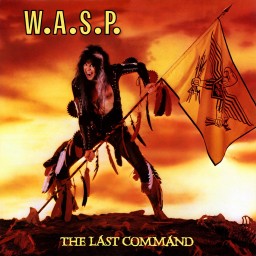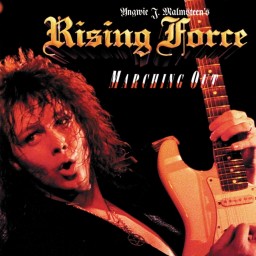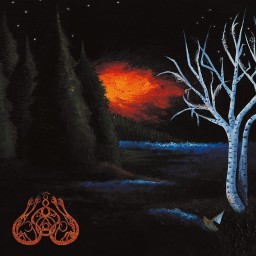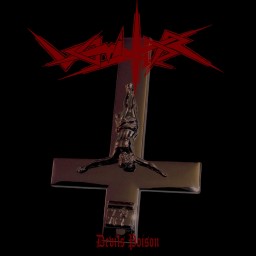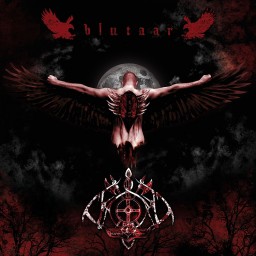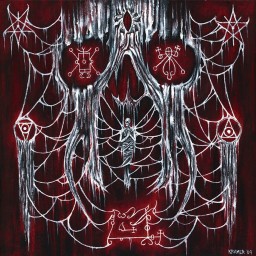Daniel's Reviews
It was hard to know what to expect when I revisited 1999’s third studio album from Birmingham funeral doom metal stalwarts Esoteric recently. I’ve had a wide array of experiences with this album in the past with my enjoyment levels varying greatly depending on my mood, my fatigue levels & the strengths & weaknesses of my listening device of choice. In fact, it’s not uncommon for me to find my first listen to be a hard slog as “Metamorphogenesis” can be particularly inaccessible at times & I usually find that it doesn’t open up until the second listen. It’s therefore very important to give it a few spins before making any sort of judgement & (despite my having checked the album out a few times before) my first run though on this particular revisit was still pretty tough going. This is largely contributed to by the incredibly dense production with the extensive layering of different elements seemingly melding into an impenetrable & relentless wall of nonsensical noise that requires you to have all of your faculties available to you in order to make sense of what’s going on. It certainly didn’t help that I was quite fatigued after work either as my brain simply wasn’t up to it but everything made a lot more sense on repeat listens. The use of headphones is also highly recommended as it seems to draw all of the disparate elements & layers closer together from my experience & once everything clicks you’ll see the record in a completely different light moving forwards.
“Metamorphogenesis” takes the form of three lengthy pieces ranging from 11 to 17 minutes in duration & adding up to a total of 44 minutes. This makes it a relatively short release for Esoteric when compared with their previous two records which were both double albums. But never fear! You won’t find any 3 minute pop songs amongst this lot with the tracks ranging from twelve to seventeen minutes in length & you shouldn’t expect to be humming along to many melodic hooks afterwards either. Interestingly, two of the three tracks begin with all guns blazing instead of employing the gradual slow build-up model that seems to be a standard with this sort of music. It can actually be pretty jarring if you’re not ready for it. Particularly with the first track as I always forget to prepare myself to experience a sudden barrage that includes multiple vocal & lead guitar tracks going right from the word go. But I guess you could say that Esoteric’s whole approach to music is confronting. Their unique style of funeral doom metal can be overwhelming & suffocating in its density with separation between the instruments having been sacrificed in favour of sheer weight & volume. The bass that forces its way out of your speakers is somewhat akin to that of drone metal in a way as Esoteric seem to employ the use of noise & speaker reverberation in a similar (but less obvious) fashion & the use of repetition is also used for a similar purpose. Despite the huge amount of different parts that are layered into each piece, these tracks are drawn out for days & I wonder about the influence of post rock on the band as there’s a definite similarity to the way they build towards a crescendo over a long period & with the listener not really noticing.
Unlike most purveyors of funeral doom, each of the three tracks included has its own unique personality but shares similar characteristics. The space & cosmic themes the band employs suit the instrumentation to a tee with loads of effects being utilized to take the listener out of their comfort zone. In fact, some sections seem to have been intentionally composed of completely disparate parts that make no real sense but ultimately contribute by putting you into a defined head space before the next section comes in to crush you with ridiculously heavy but equally beautiful instrumentation. The experience is noticeably psychedelic & the idea of a bad acid trip comes to mind on more than the odd occasion. But I don’t say that in a negative fashion. It’s simply that Esoteric sound like no one else on Earth on this album. Their use of dual vocals is both relentless & unintelligible but it’s used as more of an accompaniment to the overall soundscape than as a musical protagonist. The lead guitar work is also a constant with the melodies of bands like Katatonia & Anathema being the obvious reference only never in as twisted a fashion as you’ll be submitted to here with the various licks being drawn back into the wall of noise rather than sitting out front on their own.
Once it clicked with me, I found “Metamorphosis” to be an astounding album. It took me to realise that some of the things that initially caught me off guard were intentionally employed & that Esoteric wouldn’t have achieved such an otherworldly result without them for me to see the true genius in this music. It shares a lot in common with Australian doom/death legends diSEMBOWELMENT in its psychedelic qualities & thick & unique atmosphere &, while we’re on the topic of Aussie music, I also hear a lot of “Paradox”-era Cruciform in the riffs & structures with the band not being afraid of lifting the tempo on occasion too. Most doom metal is all about those riffs & Esoteric possess those in spades but they don’t feel the need to thrust them down your throat when there’s so much more to be said. Funeral doom metal can often be one-dimensional but “Metamorphogenesis” almost has too many dimensions for its own good at times. Esoteric can take you to uncharted parts of the universe with this music & I can’t recommend “Metamorphogenesis” enough.
For fans of: diSEMBOWELMENT, Mournful Congregation, Ahab
Genres: Doom Metal
Format: Album
Year: 1999
New York hardcore legends Agnostic Front hit the ground running with their first two releases (1983’s “United Blood” E.P. & 1984’s “Victim In Pain” album) building them quite a solid following amongst the strong New York underground scene. But opinions were divided on the merits of their 1986 sophomore album “Cause For Alarm” when the Front returned with a noticeably more metal-oriented outing that was clearly influenced by the likes of Slayer. Crossover thrash fans (like myself) embraced the album with open arms while the punk elitists out there scowled at the band’s impure approach to the city’s signature hardcore sound. Personally, I think “Cause For Alarm is a great record & is thoroughly underrated. But this brings us to 1987’s “Liberty & Justice For…” album, the second & final of Agnostic Front’s forays into the realms of crossover thrash.
Here we see the band somewhat hedging their bets because not only do we get a continuation of the vicious light-speed thrash assault that so impressed me on “Cause For Alarm” but in the latter stages of the album we see the band returning to some of the more obviously punk driven material of their early years. Given that I’m definitely much more of a metal fan than a hardcore one, there will be no surprises that I would have preferred a record that was totally dominated by a crossover thrash sound & it’s difficult for me to understand the numerous reviews I’ve read where fans state that the couple of straight up punk tunes are the clear highlights when those are the only numbers that I don’t find any appeal in. But in saying that, there’s definitely enough flat-chat speed metal riffage & pounding drums for my liking here only probably not quite as much as there was on its predecessor.
The production is worth mentioning because it took some getting used to. There’s a definite lack of brightness & high-end here & it does take a little bit of the electricity out of the music if I’m honest. Thankfully the performances of the instrumentalists are tight as a motherfucker which is interesting given the major lineup changes the Front had undertaken since their last record. The entire rhythm section & one of the two guitarists were making their first appearances for the band here but you’d never know if from the evidence because they seem to have slotted straight in nicely. Vocalist Roger Miret gives another enthusiastic performance. In fact, I’d sometimes suggest that he’s guilty of OVER-enthusiasm at times because there are definitely moments where he sounds like he’s dry retching more than anything else which isn’t a particularly good look. But overall I think he suits the chaotic music pretty well.
“Liberty & Justice For…” is another enjoyable Agnostic Front record. You won’t find anything terribly ground-breaking on offer but you can certainly expect a high energy crossover thrash workout plump with peak time velocities & some of those fantastically sudden track endings I generally associate with quality hardcore. The couple of straight up punk tracks do cause the album to fade a bit towards the end which sees it sitting a step down from “Cause For Alarm” but there are definitely enough positives for me to recommend the album.
For fans of : Cro-Mags, Ludichrist, Leeway.
Genres: Thrash Metal
Format: Album
Year: 1987
This 1987 Earache Records release sits amongst the earliest examples of legitimate grindcore to receive a proper release as well as being one of the inaugural releases for Earache. Weeeellll… if I'm honest Unseen Terror's sound sits somewhere between grindcore & thrashcore as there's still a very strong thrash influence in a lot of the riff structures but the consistent use of blast beats is a clear differentiator from crossover thrash in my opinion. Unfortunately the band parted ways with their bass player just before the recording so what we have here is in fact a duo featuring Heresy/Sacrilege guitarist Mitch Dickinson on vocals, guitar & bass & Brujeria/Lock Up/Napalm Death/Meathook Seed bass player Shane Embury on drums. In fact, I believe that Embury started out as a drummer before picking up the bass when he joined Napalm Death shortly afterwards.
The production job is a bit of a problem for me with fuzzy guitars & a drum kit that sounds noticeably artificial & lacking in depth whilst the performances aren't exactly mind-blowing either with neither band member managing to stay in perfect time consistently. There are riffs galore here & you can easily pick out the influence "Human Error" had on bands like Napalm Death, Terrorizer, Carcass & even Morbid Angel. The guitar solos were almost certainly the influence for those heard on Carcass' "Reek Of Putrefaction" album while you can hear a lot of the inspiration for Pete Sandoval's drumming with Morbid Angel & Terrorizer on occasions.
But influence doesn't always equate to high quality & that's the case here with the sloppy performances & ineffective sound production combining to dampen my enjoyment. Each song that shows promise seems to include at least one section that erases some of Unseen Terror's good work while Mitch's monotone hardcore punk inspired grunt does tend to grate on me at times & also leads to the tracklisting sounding pretty similar.
Overall, "Human Error" isn't all that bad but it's just not anything that'll interest me for long. I enjoy the wealth of energetic blasting (despite it being overused) but the groovier punk riffs definitely lose some of the band's momentum which Unseen Terror unfortunately struggles to recover from given their lack of genuine musical talent. A couple of the short Garfield-related joke tracks don't help a lot either. I'd steer clear of "Human Error" if I were you & would recommend that you check out Unseen Terror's "The Peel Sessions" E.P. instead as it's infinitely stronger.
For fans of: Early Napalm Death, Heresy, Cryptic Slaughter, early Carcass & Terrorizer
Genres: Grindcore Thrash Metal
Format: Album
Year: 1987
1987's "Annihilation" album was unfortunately the only release for this massively underrated & relatively unknown Minneapolis thrash band. Kublai Khan were built around axe-slinging band leader Greg Handevidt whose reputation as an early member of Megadeth back in 1983/84 is validated by an abundance of aggressive thrash riffs & some exciting light-speed solos. Greg's vocals are really pretty powerful too & despite changing his style at regular intervals across the album (check out the obvious Hetfield-isms in the phrasing at times) he proves himself to be a more than capable front man. There's a truck-load of energy on display here & even when you can easily pick up the inspiration for a particular track it's hard not to get sucked in by the up-front execution & no-holds-barred approach to the delivery with elements of speed metal being employed quite regularly & to good effect. In fact, it's really pretty hard to understand how Kublai Khan haven't made a bigger impact (well..... any sort of impact at all) to be honest. There's not a weak track among this lot & I can only guess that it's the inconsistent & unbalanced production job that's prevented Kublai Khan from gaining tier two US thrash success. The guitar solos & snare drum really are ridiculously loud in the mix & the guitar tone & volume changes pretty drastically from track to track. It sounds like they've recorded these songs in completely different sessions & possibly in different studios & that may well be the case but thankfully the old-school tape-trader in me became comfortable with those sort of flaws decades ago so it's not hard to look past. If early Metallica, Testament & Megadeth style thrash & speed metal is your bag (particularly "Kill 'Em All") then I highly recommend that you give this one a spin.
Genres: Speed Metal Thrash Metal
Format: Album
Year: 1987
I quite enjoyed the self-titled debut album from this German thrash metal outfit but the 1987 follow-up release "Apocalyptic Nightmare" doesn't seem to have the same edge. It sees Necronomicon taking a similar approach with very loose performances & a nice raw production however this time the overall energy the band creates fails to balance out their complete lack of structure or technique with the guitars proving to be particularly incompetent. I do love the Schmier style vocals which have that nasty snarl that seems to be so common in the Teutonic thrash scene but some added technicality in the arrangements fails dismally in the execution. The Destruction influence is even more obvious than it was previously with a fair whack of speed metal being evident in the composition of the riffs but while most tracks have enjoyable parts when the band stops mucking around & simply thrashes out, only a couple of the seven lengthy tracks manage to overcome Necronomicon's technical & theoretical failings. "Apocalyptic Nightmare" is not awful but there were much better examples of Teutonic thrash around at the time.
Genres: Thrash Metal
Format: Album
Year: 1987
It's not often that a band will begin their careers with a full-length live album however that's exactly how Brazilian thrash metallers Vulcano kicked off their recording careers. Unfortunately 1985's "Live!" showcased a band that was still very much developing their sound & technique & I found it to be a pretty unappealing listen overall. Surprisingly though. 1986's debut studio album "Bloody Vengeance" represented a huge improvement with the band championing a much more brutal & extreme style that really appealed to the old school tape trader in me. So why then did I not remember what the follow-up album (1987's "Anthropophagy") was like until I revisited it this week & why has it taken close to three decades for me to come back to it? Well it didn't take me long to figure it out to be honest.
Vulcano had returned with a brand new line-up that saw band-leading bass player Zhema swapping his chosen instrument & replacing the entire twin guitar attack as the single axe man with a mostly new support crew. A bold move indeed & one that you would immediately guess would result in a changed sound. But this change in personnel wouldn't be the main contributing factor in Vulcano's latest effort sounding noticeably different to its older sibling.
So what was I looking for in a Vulcano record? Dark & evil atmosphere? Check! Fast blasting thrash riffs? Check! Death & black metal influence? Check! Raw & brutal vocal delivery? Check! Absolutely unlistenable production job that causes physical discomfort to listen to? Che..... Wait.. WHAT?? Yes that's right dear readers. "Anthropophagy" is one of those rare records whose production job is simply so bad that it comfortably evaporates any positive attributes that the music may have possessed (Think Suffocation's "Breeding The Spawn" only much much worse). And look... from what I can make out there are plenty of attractive qualities here that would likely have appealed to me if there was any sort of definition to the guitar riffs. I mean I love the vocal delivery for starters & the fast rhythms & their accompanying blast beats would likely have gotten me charging if I could make out what was going on through the muck. It's just that the rhythm guitars sound like a mess of white noise with little to no weight to them & this is exacerbated by their melting into some crashy cymbals to give "Anthropophagy" a horrible layer of high end noise that regularly instigates cringes in this particular metalhead. And that's saying something given my years of trading underground demo tapes.
Interestingly, the only track that is able to overcome the production issues to become a worthy addition to your auditory library is the six & a half minute blackened stoner metal departure known as "Fallen Angels". This is mainly due to its much slower tempo & basic riff structures which see it being more memorable & noticeably more intelligible. I'd hazard to guess that if "Anthropophagy" was sporting a bumper studio production then this song would likely have stood out like a sore thumb as it definitely sounds a little out of place amongst the rest of the blasting thrashers but as it is it serves to provide some welcome respite from the barrage of meaningless guitar fuzz. It even showcases an obvious "Vol 4"-era Black Sabbath influence in a couple of the groovy stoner riffs on display.
So overall I find "Anthropophagy" to be a really annoying record. I can tell that there's a quality aggressive thrash metal album in there somewhere but it just seems to be sitting there taunting me as I sift aimlessly through the muck it's drenched in. I can only imagine that Vulcano must have been horrified upon hearing the result. At least I hope they were.
Genres: Thrash Metal
Format: Album
Year: 1987
The debut album from this Brazilian thrash metal outfit. Their sound is built around US thrash riffs ala Metallica's "Ride The Lightning" & early Exodus only the vocals are pure black metal & they regularly employ some well executed blast beats which gives the music a good energetic feel. The production & performances are quite raw but I find their style immediately appealing. It's a shame that they hadn't quite figured out how to best structure their songs at this stage because each track has good parts but they don't always fit together smoothly & promising sections are often repeated for too long. They've also over-extending the track lengths much further than they needed to be with only seven tracks across 38 minutes. "Attomica" isn't quite at the same level of other early Brazilian thrash debuts from bands like Sepultura, Dorsal Atlantica or Vulcano but it's still well worth pursuing for fans of your rawer, more underground thrash.
Genres: Thrash Metal
Format: Album
Year: 1987
I was a big fan of the 1986 debut album from New York thrash metal outfit Nuclear Assault. It was far from perfect but somehow managed to overcome its flaws through pure conviction & energy so I wasn’t surprised to find that 1987’s follow-up E.P. “The Plague” drew a similarly enthusiastic response. It’s a six-track affair that’s entirely made up of original material & given that there are no weak tracks included the question has to be asked as to why the band didn’t simply write a few more tunes & release it as a full-length album.
The music is once again delivered with plenty of life & energy which was somewhat of a trademark for Nuclear Assault at the time but the production & performances are definitely a little less raw & show a touch more refinement. That’s not to say that “The Plague” is overly polished. The guitar sound is very much in line with other second tier 80’s thrash releases & it fully deserves any street cred it’s picked up as a result as the riffs benefit from a noticeably more shredding tone than the under-distorted, punky sound of “Game Over”. It’s great to hear Danny Lilker’s bass guitar being so easily heard in the mix too as that’s not always the case with thrash metal.
As with “Game Over”, Nuclear Assault display a variety of influences across the tracklisting but they sound a bit more sure of what they’re trying to achieve here despite the regular genre-hopping. There’s definitely a bit more of what I’d describe as traditional thrash metal on offer with a good half of these tracks sitting comfortably under that tag & (with the exception of the gimmicky joke track “Butt Fuck” which sounds very much like Suicidal Tendencies’ “Institutionalized”) there’s noticeably less hardcore included which can only be a positive thing for me personally as I’m much more of a thrasher than a punk. I can detect loads of fellow New York thrashers Anthrax on tracks like “Game Over”, “Nightmares” & “Justice” & I’d be surprised if there wasn’t a direct influence there given their close proximity & the history of cross-pollination with their lineups. There was a fair whack of speed metal on the debut & they haven’t completely forgotten that element of their sound either with closer “Cross Of Iron” sounding very much like some of the faster Venom material. The slower & more melodic title track sits the furthest from the thrash metal model however & it’s also the clear highlight of the E.P. with a super-catchy chorus hook & a well-executed atmosphere that builds progressively. In fact, it sounds a lot like one of those big WASP power ballad anthems to my ears & not in a bad way either. You should expect to feel the urge to raise your lighter in the air when this one hits your ear drums.
There’s nothing particularly technical about Nuclear Assault’s approach. Instead they opt for a simple but effective delivery that relies heavily on the strong musical relationships of the various band members. They remind me of Overkill in that respect as on paper some of their riffs don’t seem like anything you haven’t heard a thousand times before but the way they’re delivered seems to give them an extra edge for a reason I can’t put my finger on. The guitar solos are a classic example of this as they’re not terribly proficient but they manage to hide their technical deficiencies through a mixture of enthusiasm, effects & electricity. John Connelly’s vocal performance is improved on his first up effort too which helps to lift the flatter song-writing to acceptable levels.
Sadly “The Plague” E.P. is mainly known for the controversial joke track “Butt Fuck” which was written about Motley Crue front man Vince Neil having gotten away with murder after killing former Hanoi Rocks drummer Razzle in a car accident while he was cripplingly drunk. This is a real pity as it’s not one of the better tracks included & also stands out in the tracklisting as it’s not reflective of the release as a whole. The opening instrumental track “Game Over” is a great way to kick off proceedings however & remains one of my personal favourites with its authoritative thrash riffage.
“The Plague” is another strong release from Nuclear Assault. It doesn’t offer as many highlights as “Game Over” did which sees me slightly preferring the debut but there’s not all that much in it & I recommend that all thrashers should check it out.
Genres: Thrash Metal
Format: EP
Year: 1987
1993 was a really interesting year for death metal. The subgenre had peaked a couple of years earlier & was now going from strength to strength as far as popularity & commercial acceptance went but people were starting to question the longevity of the movement given the limited sonic tool kit with which the artists had to work with & this led to various different approaches being employed by the protagonists of the subgenre. On the one hand you had those that elected to simply refine the existing model without taking too many risks. Morbid Angel, Brutality & Dismember all fell into this camp with their 1993 releases. And then we had those that realized that death metal couldn’t be sustained long-term without continuing to challenge the status quo with bands like Death, Atheist & Carcass all pushing the limitations of the subgenre to new extremes.
The first two albums from Swedish death metal gods Entombed had been primarily responsible for the formation of the then thriving Swedish death metal scene. 1990’s “Left Hand Path” had wet my palette with a new & grimier sound based around their now legendary signature Boss HM-2 pedal driven guitar crunch but it was 1991’s “Clandestine” album that really saw me becoming a crazed fan. It was a much more complex & sophisticated outing that saw the band extending themselves as not only musicians but also as genuine artists. But if 1993’s follow-up “Wolverine Blues” is anything to go by then it’s safe to assume that Entombed had pushed the traditional death metal sound as far they thought it could go.
I can still remember my feelings upon giving “Wolverine Blues” my first spin after rushing out to pick it up immediately on release. Confusion would be a very good word for it really. I was genuinely confused by what I was hearing. It wasn’t that what I was hearing was all that “bad”. It was that it wasn’t what I was expecting at all. Carcass would take me to a similar place with their “Heartwork” album only a few weeks later but I think “Wolverine Blues” was a little more alienating for me initially as I wasn’t even sure that this was a death metal record at all. I definitely got the feeling that it might be a grower but I wasn’t all that sure that I wanted to invest the time required to see to be honest. I was a complete death metal nut at the time & the scene was absolutely chock full of great death metal in the mid 90’s. So why would I bother to see if I could push through the initial barricades that were preventing me from gaining full enjoyment with this record? It was because “Wolverine Blues” sounded like nothing I’d ever heard before & I got the distinct sense that I might be hearing something that would set the tone for the future of metal. I wasn’t sure I was onboard with it mind you but I wanted to see where it would go.
Now if you’re already familiar with Entombed’s earlier work then don’t expect to find “Wolverine Blues” to be completely foreign to your ears. The band’s signature elements are all still there & you’ll immediately know who you’re listening to. It’s just that those elements have been used in a different way & it’s resulted in a more fresh & noticeably accessible take on the death metal model. For example, the rhythm guitar sound is not as dominant in the mix here with the rhythm section take on a more authoritative position. Particularly the bass guitar of Lars Rosenberg which is positively huge. This gives the production job a real punch during those heavy-hitting moments where the band comes together in unison.
The overall tempo of this material is obviously more mid-paced than Entombed’s previous works & the song-writing utilizes more traditional verse-chorus-verse song structures than the anything-goes type arrangement that death metal bands had generally employed in the early 90’s. These two elements immediately give “Wolverine Blues” a more accessible feel but there were actual hooks here too. In fact, it’s difficult to think of a more “catchy” death metal record & that was a little hard to stomach for some fans (me included). The vocal delivery of LG Petrov could no longer be described as a growl or a grunt either. It was much more of a bark & had a lot more to do with hardcore punk than it did with death metal but this didn’t give it any less aggression to be honest. It was just…. different.
Instrumentally, there’d been a subtle change in the style of the riffs on “Wolverine Blues” with many of them possessing a groove that I’d associate more with stoner metal. Black Sabbath’s “Vol 4” album regularly springs to mind actually. Particularly during the doomier sections. The guitar solos also have a noticeably more bluesy feel to them that seems to have been drawn from 70’s hard rock while the drumming employed during these solos definitely seems to be trying to accentuate that by opting for beats that sit a lot more comfortably in the rock camp than the metal one. In fact, it seems like the band were using these solos as a sort of crescendo on many of these songs as the atmosphere lightens up, the tempo becomes more up-beat & you can imagine the audience all starting to rock out a little more. I can’t say that this concept appeals to me all that much but it was certainly very different.
Nicke Andersson’s drumming had been the highlight of the “Clandestine” album. He was always the creative genius behind Entombed & one gets the feeling that he was the mastermind behind the change of direction with “Wolverine Blues” too as his drumming is the catalyst for the change in atmosphere it pervades. His hard-hitting style is still in full effect but there’s a much rockier feel to a lot of this material & that’s the main element that detractors find isolating. I certainly fell into that camp initially but time saw me becoming more comfortable with it after I’d accepted that Entombed were now a very different beast.
Look I’m not going to sit here & tell you that I like Entombed Mk II as much as Entombed Mk I. Well at least not as much as I do “Clandestine”. I would have much preferred a more standard death metal offering at the time & would suggest that this is probably still the case. But I’d be lying if I claimed that the charm of “Wolverine Blues” didn't open up to me over time. If you allow the hooks to dig their teeth in then they very likely will & there are no weak tracks here. The attention to detail that marks an elite member of any subgenre is still well & truly in effect here & Entombed always had a rare talent for writing transitions that see all of the band members coming together with an inimitable crunch. This is indeed still some hard-hitting metal music. I’m just not sure that it’s death metal so I’ve never been comfortable with that tag. But if not death metal… then what? I’m not too sure but the death ‘n’ roll label would seem to be about as good as any in the grand scheme of things & I’m yet to hear any example of that sound that matches this initial foray in the two & a half decades since so I recommend that you ignore the negativity of the death metal purists out there & go into “Wolverine Blues” with an open mind. You may just find that you like what you hear. In fact, I slightly prefer it over “Left Hand Path” these days if I’m completely honest.
Genres: Death Metal
Format: Album
Year: 1993
As we entered the late 80's, the now dominant thrash metal scene had not only begun to spawn a new breed of young artists but it had also seen a noticeable increase in the quantity of inessential E.P. releases with most representing nothing more than a cash-grab in the overall scheme of things. Many of these releases chose the easy option of including live material too & given that extreme metal was still a relatively young beast with its producers & engineers still working out the best way to record it, these were not always presented with the highest quality of sound. Overkill's "!!!Fuck You!!!" E.P. is a prime example of this & here we see another in Testament's "Live At Eindhoven" E.P.
Testament's debut studio album "The Legacy" had made some fairly major waves in the metal underground when it was released in April 1987. It possessed a class & enthusiasm that separated it from the bulk of new thrash records being released at the time & it worked to build Testament's reputation as the potential heir to Metallica's throne very quickly. In the buzz leading up to its release, Megaforce Records wasted no time whatsoever in booking the band on a European tour with Anthrax; a tour highlighted by a triumphant show at the Dynamo Festival in the Netherlands on the 8th June 1987. Reportedly this show went down so well that Megaforce elected to rush out a recording of the show in order to capitalize on the band's newly found street cred.
The "Live At Eindhoven" E.P. included just the five songs; four of which can be found on "The Legacy" with the closer "Reign Of Terror" being lifted from the band's first demo tape from 1985. There's a definite energy to the performance with the band clearly very excited about the future & giving the show everything they had. Vocalist Chuck Billy's voice sounds very powerful throughout & he proves himself to have an enormous presence for such a young chap; taking his voice to more guttural levels than he had on the album. Lead guitarist Alex Skolnick shows that his tutelage under Joe Satriani had been well received as he doesn't miss a beat in showcasing a style that beautifully balances technique with an uncanny sense of melody. But the thing that maintains the listener's interest throughout the listening experience is certainly the quality of the song-writing & it's easy to see why the Dynamo crowd would have been converted into rabid Testament fans through this experience.
But sadly there's a catch. Given all of the positives listed above, "Live At Eindhoven" had the potential to be a genuinely great release but falls well short due to an obvious shortcoming. There's no question that a live release was incredibly premature given that the Testament had only released the single studio album but the maturity of the band's songwriting & the clear musical talents of the musicians would have been enough to overcome any public concerns in this area. Unfortunately the roadblock would appear in the production as "Live At Eindhoven" sounds genuinely awful most of the time. There's some variation from track to track in this regard but I don't think I ever find myself able to completely commit despite my clear nostalgia towards a group of songs that were such a big part of my childhood. Don't get me wrong, most of the tracks are still quite enjoyable if you're a fan of "The Legacy" but none reach their potential with "Do Or Die" in particular falling into a murky hole. The classic "Apocalyptic City" comes the closest to overcoming its sonic limitations but the faster cuts see the dual guitar attack washed out in a blur of overpowering bass. Chuck's voice struggles to find its niche early on but soon towers over the band while Skolnick's leads cut through the murky riffage very comfortably but it's the riffs that suffer most here which is a real shame given that they're such a drawcard for any thrash metal outfit.
So overall it's a little hard to recommend "Live At Eindhoven" despite my having scored it reasonably well. I can't deny my enjoyment of the song-writing & performances but the appeal of this record is definitely limited by its production flaws & it's hard to see the relevance of the release given the timing in the band's career. Testament fans will undoubtedly find it interesting but I wouldn't suggest it as a starting point for newcomers. Stick to the studio albums if you fall into that category.
Genres: Thrash Metal
Format: EP
Year: 1987
The German thrash metal legends continued to hone their craft. This time recruiting a new drummer & an additional lead guitarist & going for a cleaner & much more complex sound. I do enjoy the substantially more accomplished level of musicianship on display here. Particularly the guitar solos which are a real highlight & one gets the feeling that the entire purpose of the E.P. was to showcase the improved technical skills of the new lineup. The production does sound a touch empty at times but I'd be lying if I didn't say that I prefer a more polished sound than we'd heard from the band previously.
The re-recorded version of the title track is an improvement on the sloppier, dirtier original while the two new originals are both extremely entertaining. Particularly the very sophisticated "Reject Emotions" which reminds me a lot of "Rust In Peace" era Megadeth in its melodic & structural extravagance. Unfortunately the cover version of Plasmatics' "The Damned" is an obvious misfire & there are a few of those effeminate squeals that have tainted previous Destruction releases. In fact, Schmier doesn't sound anywhere near as aggressive & unhinged as he did on a record like "Sentence Of Death". There's definitely enough musical quality here to make this a really enjoyable release for fans of Teutonic thrash though & it may be a controversial opinion but I rate it more highly than any of Destruction's previous material.
Genres: Thrash Metal
Format: EP
Year: 1987
By 1983, the Swedish heavy metal scene was starting to become a bit player in the global market. It had taken a lot longer than most of us probably realise to get going but we now had bands like Heavy Load, 220 Volt, Torch & Europe all vying for the public’s attention through a traditional sound that drew heavily from the English for influence. Linköping five-piece Axewitch were one of the lesser known bands popping out of the woodwork at the time but their debut album “The Lord Of Flies” is certainly not far off the pace set by those other bands I mentioned.
To say that Axewitch pushed a meat-&-potatoes style of heavy metal is an understatement as there is absolutely nothing here that you won’t have heard before. Whether it’s the obvious Van Halen plagiarism on instrumental guitar solo track “Let The Strings Cry Out” or the just as obvious homage paid to the keyboard intro from Ozzy Osbourne’s “Mr. Crowley” on two minute interlude “The Arrival Of The Flies (Part 1)”, you’ll always find yourself casting your mind back to a familiar track or band of some sort. But that’s not necessarily such a bad thing in my opinion. I’ve always been able to look past a generic sound when it came to my metal as long as the production, performances & song-writing have stood up to my scrutiny. So the question is, do they in this instance?
Well the production is reasonably good for the time & certainly doesn’t impede your listening experience & the instrumental performances are also on the money without ever becoming highlights. In fact, I’d suggest that instrumentally Axewitch were a pretty decent heavy metal outfit & the signs were very good that I’d be enjoying “The Lord Of Flies” early on with the first four tracks all offering a fair bit of appeal to me. But there are a couple of issues that become apparent the further you get into the album & they’re mainly related to vocalist Wallen.
Wallen is by no means a terrible singer but for a generic heavy metal band to be successful they need to have a genuinely charismatic front man & he doesn’t really cut the mustard in that respect. His mid-range delivery simply isn’t powerful enough to engage the listener on the level required to break out of the underground as he struggles to hit the big notes at times. He’d make a decent cover band front man for the local pub scene but he certainly can’t compete with the Dio’s & Halford’s by any stretch of the imagination. Also, some of the later tracks show the song-writing to be half-baked & I’d suggest that Axewitch probably weren’t quite ready to venture into the studio just yet. Just listen to the vocal phrasing & melody on songs like the terribly commercial “Down Town” or the subpar closer “Seven Angels”. It seems like Wallen is almost improvising his vocals at times & it doesn’t really work as far as I’m concerned. This leads to me finding these tracks fairly tough going despite some decent instrumentation.
“The Lord Of Flies” is by no means a disaster though. In fact, highlight tracks like “Just Another Lunatic” & the title track really hit the spot for me but it’s hard to see the replay value in an album that simply emulates the big boys of the heavy metal world whilst rarely equals them in terms of quality. The influence of English bands like Judas Priest, Saxon & Iron Maiden are the most recognisable & fans of those bands will certainly find some enjoyment in Axewitch’s workman-like brand of hard rockin’ heavy metal but I doubt “The Lord Of Flies” will be hitting too many best of lists.
Genres: Heavy Metal
Format: Album
Year: 1983
During the latter part of 1980, Motorhead had hit a career high point & were enjoying the strongest critical & commercial success of their career to date. So you can imagine that the band & their management would have viewed any sort of hold-up in their touring & recording schedules as disastrous. But unfortunately for the band that’s exactly what they were about to experience. Motorhead drummer Phil “Philthy Animal” Taylor had managed to seriously injure his neck while mucking around during drunken shenanigans & apparently it’s a little hard to drum in Motorhead with a busted neck. Phil had been taking part in a game of “who can lift the other person up the highest” with a large Irishman which resulted in Phil being dropped on his head from quite a height. An extremely unlucky & freak occurrence for such a game, don’t you think? But however it may have occurred, it certainly brought Motorhead’s meteoric rise to a grinding hault. Thankfully for the band though, Motorhead’s label mates Girlschool were in the recording studio at the time & their producer Vic Maile had the ingenius idea to invite Lemmy & Eddie into the studio to record a single with Girlschool so as to ensure that the Motorhead juggernaut wasn’t completely derailed while Phil recovered.
The result was the “St. Valentines Day Massacre” EP which was released in February 1981 with the band’s names listed as “Motor Headgirl School” on the front cover. The artwork features the two bands dressed as prohibition era gangsters & their molls while the musical concept was equally as interesting. The two bands would combine for a cover version of Johnny Kidd & the Pirates “Please Don’t Touch” & then each band would cover one of the other band’s songs which resulted in Motorhead covering Girlschool’s “Emergency” & Girlschool covering Motorhead’s “Bomber”. Girlschool drummer Denise Dufort took on the drumming duties on all three songs.
For those that aren’t already aware, Girlschool were a fairly prominent all-female NWOBHM act that put out some fairly decent records through the early 80’s. I’d recommend you check out their 1980 debut album “Demolition” if you enjoy straight down the line hard rock with a bit of danger about it but don’t expect to hear too much legitimate metal. Their sound is much more along the lines of your grimy Motorhead-inspired hard rock. In fact, Lemmy & the boys were clearly their primary influence in my opinion. It’s interesting to note that Lemmy had a brief affair with guitarist Kelly Johnson & has been quoted as saying that he’s always had strong feelings for her even decades later. He certainly respected her as a musician & was a strong supporter of the band throughout their career.
All three of the songs here are worth a listen. “Please Don’t Touch” has a strong 50’s rock ‘n’ roll vibe going on while “Emergency” is more of a straight-up hard rock number. I prefer the original version of “Emergency” which is my favourite Girlschool song overall. “Bomber” is probably the track that offers the most appeal for me personally as it’s the heaviest of the three & I think the girls make a good fist of a genuinely classic song.
The E.P. is generally regarded very highly with some people claiming it to be a NWBHM classic. Personally, I quite like it but think that those sort of sentiments are fairly extreme. “St. Valentine’s Day Massacre” should be enjoyed for what it is i.e. a novelty release intended to tide fans over until Motorhead could recover from Phil’s injury. It certainly doesn’t compare with Motorhead’s previous three albums but is a fun listen nonetheless.
Genres: Heavy Metal
Format: EP
Year: 1981
Pagan black metal, eh? A subgenre that has always seemed to me to be quite loosely defined & hardly warranting of differentiation if I’m completely honest. But if ever there was a record that typified exactly why someone thought it necessary to create a unique identifier then the debut studio album from Germany’s Nagelfar (entitled “Hünengrab im Herbst”) may just be it. Unlike most folk metal releases, this record is without question a black metal album at its core. But there’s also enough folk metal here to mean that fans of the darker & more evil brand of black metal may be put off a bit too. In fact, I almost fell into that category myself... but not quite.
Nagelfar was based around founding members Tobias & Alexander Frohn (guitar & drums respectively) with various musicians rotating around them over their short career. Some of you may already be familiar with Alexander through his solo project The Ruins Of Beverast where he records under the pseudonym of Alexander von Meilenwald. The duo recruited an additional two band members in 1995 before recording two demos & signing a recording contract with Kettenhund Records for their debut full-length which was released in December 1997.
The production we get on “Hünengrab im Herbst” is very surprising for a Pagan black metal release & even more so when you consider that this is a debut. The crystal clarity of the recording is one of the highlights of the album & could possibly have lured me into enjoying the experience a little more than I ever had any right to. The mix is driven by a super-powerful drum sound. Particularly the kick drum during the machine gun double kick sections & the snare during the blast beats. The bass guitar sits way back in the mix & contributes on more of a subliminal level but the guitar riffs are bright & in your face throughout. It all makes for a controlled sonic avalanche that jumps out of the speakers at you regardless of your taste & I found it to be pretty refreshing for a subgenre that prides itself on its exclusive use of intentionally lo-fi recording processes. It’s great to see that black metal doesn’t have to be only semi-intelligible to make an impact & deliver an atmosphere.
The performances are also high quality. Particularly the rock solid & metronomical drumming display from Alexander who plays a major role in keeping the record engaging. I also really enjoy the tortured black metal shrieks from vocalist Jander. When he goes all out Nagelfar’s sound is at its most dark & exciting in my opinion. Unfortunately I can’t say the same for his clean vocals which are very hit & miss. More miss than hit in fact. He alternates between a deep chant & a mournful goth rock delivery that reminds me of parts of Anathema’s early works but I can’t say that either approach really sit all that comfortably with me. It probably doesn’t help that these inclusions usually coincide with the folkier sections of the record because folk metal & I have never been terribly fond of each other.
In fact, Nagelfar offer far more compositional experimentation than your average kvlt black metal outfit with the regular use of keyboards, piano & several folk-oriented instruments offering something different to break up the blasting black metal. The only problem with that is my taste really. I happen to LOVE blasting black metal. And I also happen to HATE cheesy folk metal. So what tends to happen is that I find myself digging the shit out of the start of each track only to find my adoration gradually eaten away by several frustrating & generally off-putting folky sections & this ends up tarnishing what had the potential to be a bloody good listen. I mean I love the really intense parts despite the fact that some of the guitar riffs can be a touch more melodic than I’d usually go for. The word epic pops into my mind quite regularly with some parts reminding me of the sweeping & uplifting blast sections that Deafheaven have gone on to make their name off in more recent times & others drawing on the classic Bathory Viking metal sound to good effect which can’t be a bad thing either.
But overall I find myself feeling a touch empty after listening to “Hünengrab im Herbst”. It’s certainly a professional example of the black metal sound but I can’t help but have those what-if moments when I hear genuinely amazing material like the first five minutes of the closing epic “Der Flug des Raben (Ein Jammerschrei in traurig' Nächten)” only to find my hopes & dreams somewhat dashed during a middle section which brings several cringes to my face. The cheese factor isn’t enough to completely nullify the strong parts but this could have been a much higher scoring record for me if there was a stronger focus on the true black metal ethos.
Genres: Black Metal
Format: Album
Year: 1997
This was my introduction to Coroner way back in 1988/89. I bought the album on cassette & listened to it quite regularly. It was certainly a much classier effort than their debut album "R.I.P." from the previous year but I still found myself struggling a little with Tommy's occasional neo-classical indulgences. Instrumental "Arc-Lite" with its Malmsteen-esque arpeggios was a particularly awkward listen for me as the neo-classical element seems to take away from the darkness of the atmosphere & at times it all seems a little cheesy. The rest of the album is generally quite enjoyable though with "Absorbed", "Sudden Fall" & "The New Breed" being the pick of the bunch. It's definitely a solid release but 80's Coroner never really appealed to me like 90's Coroner did.
Genres: Thrash Metal
Format: Album
Year: 1988
I think it’s fair to say that the Polish weren’t exactly a major contributor to the burgeoning global metal scene during the 1970’s & early 1980’s. But 1982 would see the roots of the local movement starting to sprout through a series of 7” singles from TSA who were the first Polish band to try their hand at a heavier form of hard rock. The following year would represent the true starting point for the local scene however following the release of the debut studio albums from both TSA & a five-piece outfit from Poznan known as Turbo. TSA would also put out an additional live album the same year & the two bands would go on to form the basis of the Polish heavy metal scene for decades to come along with over the top Katowice outfit KAT.
As was the case with the early TSA releases, I think it’s fair to say that Turbo’s debut album “Dorosłe dzieci” can’t exactly be classed as heavy metal in the true sense of the term. There’s a lot more 70’s hard rock on offer than there is genuine metal despite the extensive use of double kick & the occasional power chord here & there. I’d suggest that the band were drawing quite strongly from bands like Scorpions & Deep Purple for inspiration more than they were the likes of Black Sabbath but the NWOBHM has certainly played a part in the development of their sound. Turbo pay clear homage to the early works of Iron Maiden at times. Particularly through the continuous use of guitar harmonies which is a major element in the make-up of their sound. Bruce Dickinson-period Samson also springs to mind on occasion.
The three ballads are where the Scorpions influence is the most obvious as Turbo show themselves to be very proficient at creating a gentler form of hard rock without surrendering to the cheese gods. In fact, the band are clearly very accomplished musicians & I don’t find this all that surprising. All of the Polish heavy metal releases I’ve heard over the years tend to share the same attribute & (as is the case here) they’re all beautifully produced too. I put that down to the fact that it’s much harder for non-English speaking bands to break out of their local scenes so the ones that do generally tend to be a cut above the rest.
Wojciech Anioła’s drumming Is noticeably more exciting than your average early 80’s hard rock drummer was likely to attempt at the time & this is another factor in people often labelling “Dorosłe dzieci” as a metal release while the basslines of Piotr Przybylski have clearly been influenced by Iron Maiden’s Steve Harris. The guitar harmonies & lead solos are the clear highlight of the album however as they’re beautifully composed & executed. Unfortunately I think the vocals of Grzegorz Kupczyk drop the ball a bit on occasion & they definitely represent the weaker element in Turbo’s makeup. Grzegorz often utilizes a spasmatic delivery style that doesn’t quite cut it against the classic metal front men of the time but he certainly seems better suited to the ballads where he can get in touch with his emotional side. He’s definitely no Klaus Meine though. I think the vocal hooks could have done with a bit more work on some songs too which is ultimately what leaves a few tracks sounding flat. In total I’d suggest that I enjoy roughly two thirds of the track listing but there’s nothing truly horrible included.
The strength of Turbo is in the skills of the instrumentalists however & this highlighted in no uncertain terms during the sole instrumental piece “W sobie” which is the clear album highlight. It features the stunning use of melody matched with impeccably executed guitar harmonies & I find it dominating my thoughts for days afterwards. The closing title track is also one of the stronger moments & represents the best of Turbo’s softer side.
Overall, I find “Dorosłe dzieci” to be an enjoyable & rewarding listen that’s not too dissimilar to TSA’s early works in terms of quality. If pushed, I’d suggest that I slightly favour Turbo’s debut over the two TSA albums from 1983 but that’s mainly on the strength of “W sobie” which really does stand out as a huge achievement for the band. Fans of heavy rock should find some enjoyment here as long as you can look past the Polish language lyrics. Turbo were already a class act & it’s not surprising that they’d go on to bigger & better things in the near future.
Genres: Heavy Metal
Format: Album
Year: 1983
The third album from Newcastle’s black metal pioneers Venom (1984's “At War With Satan”) hadn’t exactly set the world on fire. Venom had played an almost unparalleled role in the creation of extreme metal with their first two records; 1981’s “Welcome To Hell” & “1982’s “Black Metal”. But a change of direction towards a more slightly cleaner & substantially more progressive approach hadn’t pleased their many fans & critics so the pressure was on for them to release something that was more in line with the public’s expectations. Personally, I very much enjoyed “At War With Satan”. In fact, I regard it as my favourite Venom album to that time so I can’t say that I would have agreed with the common consensus that the band should return to their roots but I guess I lost out in that argument because, on the evidence of 1985’s “Possessed” album, the band were listening to the market & delivered a product that they believed would alleviate the concerns of those disgruntled fans.
The cover artwork features a photograph of two young children sporting Venom singlets but it looks like they’ve just taken the negative of the photo which creates an eery & quite demonic looking result. The boy shown here is actually drummer Abaddon’s son while the girl is producer Keith Nichol’s niece & I think the image has the desired effect as it nicely ties in with the album title & the band’s evil image but doesn’t look too flashy. The record would again be released through Neat Records who front man Cronos had a strong affiliation with after working there for many years, & producer Nichols had been responsible for producing all of the Venom albums to date so it would have been a comfortable recording environment for the band.
But the result of the efforts would seem to be a strange outcome really. From the very first second of the opening track it becomes plainly obvious that Venom have returned to the dirtier, grimier sound of their first two outings, only this time they’d pushed the threshold a fair bit further as the production on “Possessed” could only be described as atrocious. The rhythm section is far too loud in the mix (particularly the drums) with Cronos seemingly struggling to find room for his vocals & Mantas’ fuzzy rhythm guitars being completely lost in the mix although his solos are often afforded far too much volume & come across as completely overpowering at times, despite the fact that there are no rhythm guitar tracks underneath them. All of this leaves a good portion of the tracklisting sounding like a complete mess with the unbalanced mix ensuring that Venom’s already fairly loose performances would struggle to obtain anything close to cohesion. But I don’t think that any of this was just bad luck mind you. I’d be very surprised if the band & their management hadn’t decided to employ as dirty a sound as possible in order to try to recoup some of their lost street cred following the failure of “At War With Satan” to fully capture acceptance from the underground metal market.
As with the production, the song-writing has returned to the shorter, simpler style of the band’s early material with 13 songs being included on the tracklisting. Fans would have felt that the combination of Motorhead styles rock ‘n’ rollers, up-tempo speed metal bangers & more traditional heavy metal numbers felt quite familiar as it was nothing new for Venom. Drummer Abaddon still can’t play his instrument with his excessive volume in the mix helping to further highlight his obvious technical deficiencies. Particularly in the double kick work. It’s pretty surprising that he hasn’t improved more over the four years since “Welcome To Hell” but perhaps that’s been contributed to by the minimal amount of live shows the band had taken part in by this point in time. I’m not sure it really matters though as these inadequacies are half the fun of a Venom record. But in saying that, the improvement in Mantas’ lead work is quite striking. His solos are now much more accomplished & he doesn’t shy away from showcasing his newly found chops. Unfortunately for him, I do think that his more refined & melodic approach does clash with Venom’s overall image a bit. Cronos on the other hand, is his usual charismatic self & his overall contribution is high quality. Particularly his powerful bass playing which sees him portraying a new level of confidence in his instrument that’s only enhanced by his excessive presence in the mix. Unfortunately his vocal performance is substantially nullified by the very same production flaw & this leaves Venom’s main attraction sounding noticeably muted.
“Possessed” would receive mixed reactions from fans & critics with even the many die-hard fans of Venom’s earlier works struggling to get onboard with the new material. The common consensus online seems to be that the band had lost their mojo as far as the song-writing goes but I disagree with this theory. I honestly don’t think the quality of the song-writing is anything majorly different to what we’ve heard from Venom before. It’s just that it’s not presented in an appropriate fashion with the hooks being lost in an inadequate lo-fi production job which highlights Venom’s weaknesses over their strengths. I mean a lot of this material was actually written before “At War With Satan” ever hit the shelves so you shouldn’t expect any major overhaul of their traditional style here.
Sadly, the failure of “Possessed” to make the commercial impact that the band had hoped would signal the end of Venom’s classic period & also erased any chance of them going on to be held in as high a regard as the thrash heavy weights they’d influenced. This was the critical moment for Venom’s careers & they blew it. It would appear that Mantas could see that because he left the band to pursue a solo career shortly afterwards but not before Venom could record one more studio album in the as-yet-unreleased “Deadline” record. Mantas would return to the fold a few years later but it’s well documented that he was unimpressed with the result of the “Possessed” record.
Genres: Heavy Metal Speed Metal
Format: Album
Year: 1985
I was a reasonably big fan of the 1983 debut album “See You In Hell” from Worcestershire-based four-piece heavy metal outfit Grim Reaper. It was unfortunate that it came so late in the NWOBHM game really because the band had enormous potential. “See You In Hell” even reached number 73 on the US charts & went on to sell over a quarter of a million copies. But would Grim Reaper be able to capitalize on that early promise with their 1985 sophomore effort? Let’s find out, shall we?
The “Fear No Evil” album was once again recorded at the Ebony Records recording studio in Hull with label founder Darryl Johnston handling the production duties. Ebony was a fairly underground label & had cut its teeth through the release of albums such Savage’s “Loose ‘n Lethal” & Chateaux’s first couple of records. It was a very small operation so it’s no surprise that Johnston had also produced “See You In Hell” & “Loose ‘n Lethal” himself. But the releases I just mentioned all had a fairly raw & brutal NWOBHM production with a big rhythm guitar sound that offered a fair bit of appeal for an old metalhead like myself. “Fear No Evil” sees Johnston veering away from that a little with a more professional production that places more emphasis on the vocals whilst still maintaining that gritty edge that the New Wave had built its reputation on.
Unlike the striking image that adorned the debut, the “Fear No Evil” cover artwork is nothing to write home about as it portrays an awkward image of the grim reaper himself, riding a motorcycle through a plate glass window that’s presumably located in a church somewhere. It’s far more childish than it is intimidating.
Musically though, this is a very similar record to “See You In Hell” as it relies heavily on the same formula of simple, chuggy, mid-paced power-chord riffs & over-the-top falsetto-style vocals. It’s almost as if the band have intentionally limited themselves to a meticulously defined musical palate & in the process have sacrificed their artistic license for the sake of accessibility. This is about as meat-&-potatoes as heavy metal gets with straight-forward verse/chorus style song structures, simple bare-bones riff composition & a repetitive approach to the vocal hooks. Steve Grimmett’s vocal delivery is about as powerful as any you will find & I get the impression that Darryl Johnston knew full well thathe was only the only thing Grim Reaper had going for them because they really do milk him for all he’s worth here with the simply yet catchy choruses being repeated over & over again. Grimmett’s up to the task most of the time too although there are certainly moments when he can be overpowering & monotonous given that he’s often tasked with adding interest to an otherwise fairly generic musical landscape. And does he really have to sing the song title at the start of every song? Lyrically we see Grimmett swapping between darker occult themes & a Judas Priest party-time direction which isn’t half as interesting but seems to fit the band’s sound a little better as they’re not the most imposing of metal bands. I would love to hear what Grimmett could have done over a more professional backing track though.
Despite the fact that “Fear No Evil” is a slightly tighter & more polished record than “See You In Hell” was, the rest of the band still have limited technical skills to be brutally honest. Original drummer Lee Harris had recently been replaced with new boy Mark Simon but this hadn’t made a huge difference to the end result given that Simon was only marginally more talented. It would seem that guitarist Nick Bowcott had only just discovered Eddie Van Halen’s two-handed tapping technique because he goes to town on it on almost every solo here. Unfortunately for Nick, he’s just not a very good guitarist so it all sounds fairly tedious to my ears. But Grim Reaper seemed to know their strengths & that was in making a fairly derivative brand of heavy metal that all sounds relatively similar. They were very much the one-trick pony & it’s hard to argue against claims that a lot of this material was built around ideas that had been rehashed from the debut. Even if that wasn’t the case, you’re destined to feel that you’ve heard most of these riffs many times before. They’re just not that distinctive & Grim Reaper rely far too heavily on Grimmett to pull them out of the fire. Thankfully he’s up to it for the most part with a couple of noteable exceptions. Particularly the corny Twisted Sister-style hard rock number “Rock ‘n’ Roll Tonight” which is as generic as they come & features a blatant rip-off of the opening riff to Iron Maiden’s “2 Minutes To Midnight” at the start. The tacky horror movie intro to closing number “Final Scream” isn’t much better although it would strangely be ripped off by US death metallers Dying Fetus on their “Grotesque Impalement” EP fifteen years later.
Overall, “Fear No Evil” is an obvious step down from the debut as far as song-writing goes but it’s far from a disaster. It’s certainly a flawed piece of work but Grimmett’s talent & charisma is enough to keep me interested for the majority of the album. I’ve become a pretty big fan of his these days with his more unpolished work on “See You In Hell” & Chateaux’s “Chained & Desperate” albums having dug its teeth into me quite deeply. But there can be very little doubt that “Fear No Evil” suffers from not having differentiated itself enough from “See You In Hell”. It’s essentially a poor man’s version of that album so the band’s early fan base grew tired of it quite quickly & this was only exacerbated by the wealth of more exciting extreme metal that had exploded onto the scene in the time between records. Grim Reaper really couldn’t afford to come up with an inferior product if they were going to go with a package that sounds so familiar. But when taken on its own merits, “Fear No Evil” is certainly an enjoyable listen that should appeal to fans of Judas Priest, Dio & Twisted Sister. It’s just an inessential one if you’ve already got a copy of “See You In Hell” which does the same thing only slightly better.
Genres: Heavy Metal
Format: Album
Year: 1985
Up until 1984, South Yorkshire-based NWOBHM legends Saxon had released six full-length studio albums in as many years so fans would have felt pretty confident that they weren’t gonna go all Def Leppard on us & take five years mucking around in the studio before their seventh studio album would see the light of day. But having said that, the Def Leppard comparison would actually prove to be fairly apt in some ways. Possibly not the ones we're referring to here however.
Saxon & their management had made very little effort to hide the fact that they were aiming their last couple of records directly at the US market with 1983’s “Power & The Glory” & 1984’s “Crusader” both showcasing an increasingly strong focus on radio-friendly radio anthems. I felt that the former achieved this very well & it’s still my favourite Saxon album to this point in the game while “Crusader” took things a step further & almost missed the mark, only being propped up by a couple of very strong highlight tracks. I still have a fair bit of time for “Crusader” however there’s little doubt that it represented Saxon’s weakest & most divisive album since their 1979 self-titled debut. And that brings us to Saxon’s 1985 album “Innocence Is No Excuse” which features some pretty cheesy cover art that reeks of 70’s Scorpions with a close-up image of an attractive brunette seductively eating an apple.
Saxon’s management had been disappointed with the band’s French independent label Carrere Records following the failure of the “Crusader” album to make any real impact on the US market so “Innocence Is No Excuse” sees the band moving to major label EMI Records in the hope of reaching a greater level of exposure & there’s little doubt that they achieved that goal with the album going on to become the highest charting Saxon release ever in America. With the major label support came the inevitable increase in production budget & this is reflected in a fuller & clearer sounding album. Everything sounds a little bigger & more polished than Saxon have sounded before with the drum kit having been the recipient of plenty of reverb to give it that big stadium atmosphere. This record certainly sounds very much of its time & has much more of an American flavour than a NWOBHM one. In fact, I’d go so far as to say that I think it’s been over-compressed which isn’t terribly surprising when you consider that it was producer Simon Hanhart’s first big record & he’d never worked with a metal band before. Saxon’s sound has long been a combination of AC/DC, Judas Priest & Van Halen but Simon’s production seems to have dropped the band’s AC/DC crunch & replaced it with a more accessible sheen that clearly brings to mind the sound that Def Leppard had been championing in recent years. It’s actually uncanny just how much all three of the singles from the album sound like Def Leppard & that has undoubtedly led to this record becoming an extremely divisive release with the band’s fanbase. Saxon’s manager was apparently a big fan of Def Leppard & it was him that was responsible for pushing the band towards a production that was big on vocal harmonies, keyboards & big snare drums.
Don’t get me wrong. This is a more metal album than “Crusader” was & I’d suggest that it sits at about a 60/40 ratio of hard rock to heavy metal but it’s still a much more commercial sounding album than anything from the band’s early 80’s heyday & there’s unquestionably a case for the production having watered down what could potentially have been a heavier Saxon record. It’s almost like Saxon’s management have taken an each-way bet to try to renew the efforts at cracking the US market while also attempting to win back some of the fans they’d lost with “Crusader”. But when you look at the song-writing, it’s hard to argue that this isn’t a more consistent release than “Crusader” was. It may not have any obvious classics like the title track from “Crusader” was but there are far fewer failures here & for that reason it didn’t receive the same level of criticism as “Crusader” where fans claimed it was basically just two decent songs with the rest being filler. The song-writing is a little more memorable here despite the continued use of horribly cliched song-titles & lyrics. Bif Byford & the two guitarists have rarely sounded so potent & I’d argue that this might be Graham Oliver & Paul Quinn’s crowning achievement as soloists. There are a few ballads included of course which would provide further ammunition for those that wanted to ignore the stronger song-writing & focus on the glossy sheen of the album but they’re generally pretty well written & executed. Also, just like with “Crusader”, the record sports several blatant examples of Van Halen worship with songs like “Back On The Streets”, “Everybody Up” & the vey “Hot For Teacher”-esque “Give It Everything You’ve Got” obviously borrowing from the gods of US hard rock radio. The more metal numbers fall firmly in the 80’s Judas Priest camp though & are unsurprisingly my favourite tracks.
Interestingly, this would be the final Saxon record for original bass player & song-writer Steve Dawson who would be fired shortly afterwards. Steve had made his opinions felt with regards to the concept of using of a big name producer whose ears were completely shot for the next album & this didn’t go down well with Saxon’s management. Neither did the fact that he pushed for the song-writing credits to sit solely with the primary song-writers instead of being shared across the whole band as they had been up until this time which saw him & Bif receiving most of the royalties for “Innocence Is No Excuse”. Unfortunately Saxon would struggle to recover from the loss of Dawson for many years afterwards. And here’s a bit of a fun fact for you... Dawson was actually the inspiration for big moustache wearing Spinal Tap bassist Derek Smalls. Spinal Tap creator Harry Shearer apparently went on tour with Saxon prior to writing the film & the result sees Smalls strongly mimicking Dawson’s on-stage mannerisms & look. Unfortunately Dawson never went on to anything substantial after being axed from the band & subsequently becoming disillusioned with the music scene but this isn’t a bad swan-song. It’s not on the same level as Saxon’s classic trio of 1980 & ‘81 albums but it’s a good solid heavy rock record nonetheless.
Genres: Heavy Metal
Format: Album
Year: 1985
Five-piece LA heavy metal outfit Lizzy Borden took their moniker from an American woman who was charged with the murders of her father & stepmother in 1892. The story of the trial, & her life after being acquitted of the charges & released from prison, have gone on to become a well-known part of American folklore with a number of theories still tying Lizzy to the murders. So it’s not surprising that a metal band would deem Lizzy’s name to be a suitable moniker given the macabre connotations that seem to be attached to it. In fact, the band’s lead singer has also taken on that moniker which has led to a fair bit of uncertainty as to whether Lizzy Borden is just the band’s polarizing front man or the band themselves.
Lizzy Borden also sported a significantly glam-oriented image &, much like WASP, this has led to them being unfairly lumped in with the LA glam metal movement when their music doesn’t really warrant it. At least not at this early stage in their career. In fact, it wouldn’t be stretching things too far to place Lizzy’s 1985 debut album “Love You To Pieces” under the US power metal banner because it certainly showcases elements of speed metal & power metal at times. I don’t think the sleazy cover art does them any favours though as the cheesy image of a lingerie-clad woman waiting to be attacked by a leather-clad maniac is much more in line with the glam metal model than it is with a metal one & you’ll be left with little doubt about which era was responsible for this record.
But once you manage to look past the glammy exterior there’s actually some decent enough metal on display here. The production job is suitably raw & energetic with enough separation & definition to ensure that each instrumentalist in easily picked out of the mix & the musicianship is excellent. Particularly from the engine room with bass player Mike Davis clearly having spent a lot of time studying the impressive technique of Iron Maiden band leader Steve Harris. There’s a lot of melody in the guitar work with axe-men Gene Allen & Tony Matuzak often flirting with a more neoclassical sound that brings to mind the work of artists like fellow US power metal pioneers Warlord. But more often than not Lizzy Borden’s sound sits somewhere between Bruce Dickinson-era Iron Maiden & early Queensryche with Lizzy’s operatic vocal style sitting right in the sweet spot between Dickinson & Queensryche’s Geoff Tate. He absolutely soars into the stratosphere here on occasions & certainly possesses a gift with those higher register screams but he does tend to be a little more polarizing than his more well-known influences as he’s a little more rough around the edges.
Now as many of you may already know, I’m not the biggest fan of speed metal or the more melodic brand of power metal (especially not the neo-classically inspired variety), so I definitely favour the tracks that follow a more traditional heavy metal direction & it’s no surprise that the songs that I consider to be filler tend to be the more speed & power metal oriented ones. But thankfully, despite a number of examples of blatant Maiden worship, there’s enough quality on offer here to keep me interested & overall I find “Love You To Pieces” to be a more than passable heavy metal record.
Genres: Heavy Metal
Format: Album
Year: 1985
I've literally only just submitted my review for Trouble's second album "The Skull" & it’s hard to think of a more suitable release to follow it up with than the second album from Los Angeles doom legends Saint Vitus given that the two bands share a lot of common elements but end up sounding so different in the grand scheme of things. If I had to pinpoint what the main reason for that is, I’d suggest it’s that Trouble blend the shared influence of early 70’s Black Sabbath doom metal & mid-70’s Sabbath stoner grooves with the more classic heavy metal sound of the NWOBHM & the US power metal movement while Saint Vitus opt to blend them with hardcore punk. And it’s quite surprising to discover just how wildly different the resulting sounds are to tell you the truth with Saint Vitus being a much dirtier, grimier prospect indeed.
Vitus retained the same line-up that delivered the filthy beast that was their 1984 self-titled debut for their follow-up record “Hallow’s Victim” which was released 18 months later in August 1985. The self-titled album was released on a hardcore punk record label in SST Records & the same can be said for “Hallow’s Victim” which shares its home with the likes of Black Flag, Minutemen, Husker Du & Meat Puppets; the production duties being handled be SST co-owner Joe Carducci & SST house producer SPOT. And given this information, it’s hardly surprising to hear that the production job on “Hallow’s Victim” sounds similarly grotty to the self-titled album. Once again we see a ridiculously murky bass-heavy mix with Dave Chandler’s rhythm guitars seeming to have had any suggestion of high end sucked out of them. This sees them combining with Mark Adams bass guitar in a fuzzy wall of filth that strangely seems to suit the Vitus sound to a tee by giving their music some additional layers of authenticity. Drummer Armando De Costa’s kit once again sounds quite loose & flabby which adds further weight to the band’s retrospective vision when it comes to production. In fact, I’d suggest that the roots of the Vitus sound can be traced back to the psychedelics of late 60’s Blue Cheer & Jimi Hendrix given the fuzzed-out guitar sound & wah-fueled approach to soloing although this is blended with the DYI attitude of the hardcore punk sound which results in a much more imposing prospect. I think it’s fair to say that “Hallow’s Victim” isn’t as successful as its older brother was in this undertaking as it doesn’t sound quite as heavy & generally bad-ass.
The artwork is pretty disappointing as it simply features a blurry, watery image of the band & does nothing to highlight the themes of the album’s lyrical content or musical direction. The cheap & nasty approach reeks of the DYI punk scene while the actual image seems more like something you’d expect to see from late 60’s psychedelic rock which is a real shame given the potential opportunity afforded by the Vitus sound. Oh well… I guess they were always going to be a more underground prospect anyway so it may not have made all that much of a difference.
“Hallow’s Victim” doesn’t see Saint Vitus trying to reinvent the wheel stylistically after their successful first-up effort. On the contrary, there are a lot of similarities between the first two Vitus records which means that comparisons between the two are inevitable. But in saying that there are definitely some points of difference worth discussing because “Hallow’s Victim” has taken the same concepts & blended the extreme ends of the Vitus sound a little more. Firstly, it’s worth noting that I don’t think “Hallow’s Victim” technically qualifies as a doom metal record in the true sense of the term because only two of its seven tracks have any right to that tag. Their debut had seen them kicking off the album with a couple of faster & noticeably punkier tracks before descending into the depths with the tempos dropping progressively over the remaining three songs & getting significantly darker in the process. Well “Hallow’s Victim” includes a substantially greater quantity of those more up-tempo numbers with even the doomier numbers being diluted with more rapid rhythms at times. But even though the tempos may be higher than you’d expect from a supposed doom metal band, Vitus never lose their focus on their Black Sabbath roots with plenty of mid-70’s style grooves dominating the tracklisting & for that reason I’d suggest that there’s a stronger stoner component than a doom one on a lot of these tracks & I’m subsequently more comfortable with that tag overall. I’d also suggest that bands like Kyuss & Queens Of The Stone Age must surely have heard this record because there are a lot of similarities between their stoner material & parts of “Hallow’s Victim”. The title track is pure high-velocity hardcore punk in the tradition of the band’s SST label-mates though & I don’t think it will be any surprise that I find this to be the only track that offers little appeal to me. I think it’s fair to say that Saint Vitus are showing the influence of consistently having shared stages with high quality hardcore bands here & “Hallow’s Victim” stands out in their back catalogue as a result because never again will we hear them produce a record that spends as much time steering away from the genre they’ve become synonymous with. But in fairness, Black Sabbath never focused predominantly on their doomy stuff so why should we be so surprised to hear Vitus following a similar path with regards to variation in tempo.
Front man Scott Reagers higher register vocal delivery once again rides high above the instrumentalists but I have to say that I don’t think his style suits the faster material as much as it did the more disconsolate despair of the band’s doomier material & I often find his more theatrical flourishes to remind me quite heavily of Diamond Head front man Sean Harris. Unfortunately, this would be the last Saint Vitus album to feature Scott for a while as he would leave the band in 1986. I’m not entirely sure as to the reasons for that departure but the strongest component of the Vitus sound was always Dave Chandler’s guitar work & here we see him taking a noticeably more restrained approach to his solos with less of his signature chaotic improvisation & a touch more structure. I think it works pretty well for the most part but in saying that, the additional space he’s afforded himself ensures that his technical deficiencies are even more obvious than they were previously. He still sits somewhere between the more chaotic Jimi Hendrix psychedelia & the heavier pentatonic blues style of Tony Iommi only this time I think it’s fair to say that he’s concentrated a little more heavily on the Iommi side of the equation.
It’s hard to say which of the two Vitus albums were the more focused to that time. I mean you could say that “Hallow’s Victim” has less of a wide gap between the various songs from a tempo point of view but it’s also a little more accessible & a touch less consistent. As I mentioned earlier, the title-track is the first Vitus song that I find to be a disappointment & there’s also nothing here to rival the heights of a song like “The Psychopath” from the debut. I don’t think “Hallow’s Victim” is quite as dark as “Saint Vitus” was either. And for these reasons I see it as a step down from the debut even though it’s an enjoyable listen overall. I think I just prefer the doomier Vitus style over the more up-tempo one to be honest. They’re very good at both but their slower stuff fits more comfortably into my musical comfort zone. Fans of Black Sabbath & Pentagram should certainly give this a few spins though.
Genres: Doom Metal
Format: Album
Year: 1985
Chicago five-piece doom outfit Trouble's 1984 debut album “Psalm 9” made a pretty big impact on me. It saw Trouble combining the dark doom metal sound of the first three Black Sabbath albums with the groovy stoner riffs of Sabbath’s “Vol 4” album & the chunky & more up-tempo heavy metal riffage of the early 80’s US power metal movement. There were also regular flirtations with prog rock, psychedelics, the NWOBHM & even full-blown thrash metal so it was a diverse record to say the least. And for that reason it sat very comfortably under the traditional doom metal tag as there was a lot more to it than just doom. The production & performances were also fantastic & it set the bar pretty high with regards to expectations for the follow-up just a year later. So does it deliver? Well yes & no.
From a production point of view, “The Skull” is a very solid sounding doom record. The down-tuned riffage & slightly flabby drum sound are perfectly suited to ultra-heavy doom metal & the vocals are a little bit more up-front in the mix this time too which works to further highlight front man Eric Wagner’s signature shriek which still reminds me of a combination of Led Zeppelin’s Robert Plant & Cirith Ungol’s Tim Baker. No one really matches this huge guitar tone to be honest as it oozes of the depth that only an organic 70’s analogue recording can provide. But in saying that, “The Skull” still doesn’t match the debut in the production department. I don’t think it highlights the strength of the musicianship the way that “Psalm 9” did as everything sounds a little bit looser.
The song-writing sounds a little less pieced together than we heard on “Psalm 9” where drummer Jeff Olsen did a fantastic job at making some fairly jarring changes work smoothly. He doesn’t have as big a challenge here as it would seem that the band have matured a bit in that area but it’s also worth noting that a good half of this material was actually written before the recording of the debut so it could just be the extra time they’ve had to bring these songs to the fullest realization of their potential. Stylistically we get a very similar record to “Psalm 9” really. In fact, perhaps a little bit too much so because I often feel that “The Skull” seems like a poor man’s version of “Psalm 9” in that it’s built off the same ingredients with only minor changes but none of its elements have the quite same impact across the board. There are some subtle differentiators mind you. For example, the psychedelic material I loved so much on the debut is noticeably absent here which is a real shame. The faster & more traditional heavy metal tracks also tend to have more of a stoner feel to them & given my struggles with groovy stoner metal riffs in the past this is probably not a positive thing. There’s no sign of the hints at thrash metal this time either. I really enjoy the strong use of acoustic guitars during a couple of the longer numbers. It ties in beautifully with the doomy atmosphere & creates a nice change of pace. But as with “Psalm 9”, the highlight of “The Skull” is the stunning use of harmonies by the twin guitar attack. They really did write the book on this technique for their doom contemporaries to follow, didn’t they, & I can easily detect their influence on bands like Autopsy, Cruciform & particularly Cathedral who it would now seem were almost a Trouble tribute act by now given that they seem to have borrowed so much from these first two Trouble albums.
It’s interesting to note that Eric Wagner was suffering from a serious substance abuse problem during this period & perhaps it’s these personal issues that are being reflected in the dark tone the lyrics have, despite being directed even more strongly towards Christian themes than we heard from them previously. Drummer Jeff Olsen would leave the band during the tour for the album too so that he could focus full-time on his studies. Not a very metal thing to do it has to be said. I hope he was studying Satanism or something bad ass like that. But given Trouble’s record I feel that’s probably a little hopeful. Could he have perhaps lost his faith which caused him to leave the band? I dunno but anyway… this is another solid Trouble album but you’ve probably picked up by now that I think it’s a bit of a step down from the exploits of “Psalm 9”. I don’t think the band showed enough development with both releases sounding a little too similar to cope with the fact that “The Skull” isn’t quite as good in every area. The faster material is also much weaker than the longer doomier numbers but that could just say more about my taste as anything else. I just feel that the thick down-tuned guitar tone doesn’t work anywhere near as well with the faster material as it lacks a little bit of excitement & for that reason I find a few of the seven songs to fall a little flat while the same tone works perfectly for the sombre material. There’s nothing as weak as “The Fall Of Lucifer” from the debut mind you but there’s also nothing that touches the brilliance of “Victim Of The Insane” either. Is it just me or is there also a touch more of that groovy stoner feel about this album? Particularly in those faster numbers which wasn’t the case previously & I still find myself tolerating those sections rather than enjoying them.
But all things considered, when Trouble get things right, like they do on the huge doom monster that is the closing title track, there are very few that can touch them for sheer heaviness & fans of Black Sabbath & Cirith Ungol will undoubtedly find plenty to enjoy here.
Genres: Doom Metal
Format: Album
Year: 1985
1984 had seen the Italian metal scene taking a noticeable stride forwards through Paul Chain’s “Detaching From Satan” E.P. which surprised fans & critics alike with it's uniquely Italian psychedelic take on the traditional doom metal model. And thankfully 1985 would see that momentum continuing via the debut full-length from an unusual three-piece act from Verona known as Black Hole; a record appropriately entitled “Land Of Mystery”.
Black Hole were based around the multi-instrumental talents of Robert Measles who is responsible for the bass guitar & synthesizers on the album as well as the vocals. And from the sound of this bizarre piece of work, one would imagine that he was a bit of a character. I mean “Land Of Mystery” isn’t your average doom metal opus by any means. There’s a lot more to it than that with a number of disparate elements having been brought together for a result that succeeds far more in ambition than it does in execution. There's very little doubt that Black Hole are Italian because there are a number of unique identifiers on display that clearly highlight the fact that this record could ONLY have come from Italy. Firstly, this music owes as much debt to the synthesized soundtracks of Italian horror movies as it does to the doomy heavy metal of Black Sabbath with the influence of 70’s prog rockers Goblin being quite obvious. In fact, Measles synth work clearly separates Black Hole from their doom metal competition & often sounds like it was summoned by Dracula himself however it’s not hard to make the link to the twisted & abstract work of countryman Paul Chain & his previous band Death SS. The other major factor linking Black Hole to their home land is the strong Italian accent that Robert sports throughout. His singing talent is highly questionable & I wouldn’t be advising him to give up his day job any time soon based on this effort but he certainly possesses a haunting charm that keeps me interested regardless. I guess you could say that he’s quite charismatic & it’s hard not to find an endearing quality in the atmosphere he pervades here despite his clear technical flaws & the same can said of the instrumentation to an extent too.
The musicianship on "Land Of Mystery" is nothing short of appalling a lot of the time. Particularly the drumming which regularly struggles to stay in time. The other musicians don’t fare much better in that respect either but there is something kinda cool about the wah-drenched bass lines & the melodic lead guitar work. The production doesn’t do the band any favours however as it’s an absolute shocker. The drums sound like matchboxes, the rhythm guitars are way too low in the mix & the vocals sound all echoey but this arguably contributes to a uniquely dark atmosphere that once again draws on 70’s horror films. This is some very dark music however it’s not overly heavy. The riffs aren’t loud enough for that despite being strongly centered around the influence of early Black Sabbath. I’d suggest that it was a conscious decision to go for a 70’s inspired production actually. It may not be to my taste but there can be no doubt that it leaves “Land Of Mystery” sounding both authentic & hypnotic. It kinda works in the same way as those early second wave Norwegian black metal albums did as its lo-fi presentation more accurately paints the picture of dark dungeons & vampiric castles.
But this is where my positive comments stop & my criticisms begin because “Land Of Mystery” is a deeply flawed piece of work. This could have been a substantially more appealing listen if the heavy Sabbath riffs hadn’t been sacrificed to the production gods & the level of the musicianship hadn't been so despicably bad at times. There are some amazing concepts presented here in theory however in practice…. well they clearly HAVEN’T practiced enough for my liking. These guys can’t play their instruments for sh*t to be honest! Starting the album with the three weakest tracks definitely hasn’t helped the situation either as it’s hard to recover your interest for the rest of the album which is admittedly a lot stronger. Choosing to open with a disappointingly up-tempo number called “Demoniac City” really didn’t give me a good appreciation of what was to come as it’s noticeably lacking in doom & sounds a lot closer to a poor man’s NWOBHM. I do like the expansive palate of influences that have been drawn upon though with the smooth progressive rock of Pink Floyd, the dark goth rock of Bauhaus & the depressive post-punk sounds of Joy Division all popping up on occasion. But overall, I think Black Hole were trying to force the soundtracky ambience to work in the context of some potentially very heavy Black Sabbath riffs & they haven’t achieved a fluent result. The longer songs on the B side definitely work better than the early ones as they’re given more time to weave their web & include a few more cool jazzy parts where Measles gets to show off some pretty classy (if sloppily performed) bass riffs. I mean I don’t need Black Hole to be a metal band. I just need them to let things flow organically & I don’t think they do that enough for my liking on “Land Of Mystery”.
Later Black Hole material failed to make the same sort of impact as this record did & we're unlikely to ever hear of them again but they certainly left their mark with this debut. Whether you consider that mark to be decorative enhancement or an annoying stain is up for debate though.
Genres: Doom Metal
Format: Album
Year: 1985
With Helloween’s self-titled EP having made a considerable impact on the market in the first half of 1985, the door was ajar for other German speed metal acts to stake their claim & in doing so, help to build a unique & identifiable scene with somewhat of a trademark sound. Amongst the leaders of the charge were Hamburg's Iron Angel; a five-piece outfit that was formed back in 1980 when its members were still at school. Interestingly (& not overly surprisingly), Iron Angel originally went by the name of Metal Gods (a moniker that was borrowed from the classic Judas Priest track of the same name) & it wasn’t until 1983 that they changed their moniker after being inspired by a novel about a spirit hunter (presumably named “Iron Angel”). The band began their careers in recorded music by releasing two considerably lo-fi demo tapes before signing a recording contract with German metal label Steamhammer, who had previously released records like Brocas Helm’s “Into Battle” & Destruction’s “Sentence Of Death”. The resulting debut album, with the particularly metal title of “Hellish Crossfire”, would be recorded in Berlin in May 1985 & would include a large percentage of re-recorded material from the earlier demos.
The production was handled by Horst Muller who was responsible for producing Celtic Frost’s “Morbid Tales” EP as well as contributing to the recording & engineering of Destruction’s “Sentence Of Death” EP, Hellhammer’s “Apocalyptic Raids” EP & Running Wild’s “Gates To Purgatory” & “Branded & Exiled” albums, so you would imagine that Horst had a reasonable idea of what was required to produce a savage metal record. And he’s done a pretty good job at it here too with “Hellish Crossfire” being driven by an intense rhythm guitar sound that gives the whole affair a fairly brutal & underground feel; despite being a little low in the mix compared to the pounding drum kit. The guitar solos aren’t exactly top draw stuff though with very little virtuosity or melodic ambition on display.
The cheesy fantasy cover artwork is not really a terribly good reflection of the music that dominates the media inside. It certainly looks quite colourful & appealing & would likely be a good match for one of the more melodic European power metal releases, but I can’t say that it’s a very good match for the evil Satanic lyrical themes & raspy vocal approach of Iron Angel. In fact, this record is often linked to early black metal which would seem a particularly large stretch to my ears but it’s given even less justification by the pastel coloured imagery on this cover.
In my opinion, what we actually have here is a potent brand of speed metal that’s more than a little rough around the edges but makes up for any technical deficiencies with raw enthusiasm & unrelenting velocity. There are no complex song or riff structures or big tempo changes to found here but I don’t think the album ever becomes too samey because the songs still have their own identity despite being mainly focused on a pedal-to-the-metal approach. I think it’s fair to say that Iron Angel sit right in the sweet spot between Germany’s heavy/power bands like Running Wild, Accept, Helloween & Grave Digger & more aggressive thrash metal outfits like Slayer, Sodom & Destruction. There are definitely some sections that I would label as genuine thrash metal however this rarely equates to full songs with the sound of classic metal bands like Judas Priest & Accept never being too far away. I think Agent Steel are a lot closer to thrash than Iron Angel were & I think this has a lot to do with the simplicity of Iron Angel’s riffs which rely more on the vocals for the hooks than the thrash metal model which is a little more riff based. The same tools are certainly utilized on occasion though & there are several moments when I feel they sound like sped up versions of Venom or Hellhammer given the similarly simple approach those bands took. Kreator front man Mille Petrozza has been quoted as saying that Iron Angel were Germany’s worst thrash metal band but their best speed metal one so make of that what you will.
Front man Dirk Schroder takes a particularly raspy approach to his vocals & many people claim that his delivery was a bit of a career limiter for Iron Angel. I’m not sure I agree as I never find him too hard to stomach. I’d probably describe him as a combination of Accept’s Udo Dirkschneider, Helloween’s Kai Hansen & occasionally Mercyful Fate’s King Diamond but he never feels like he’s losing control & can easily handle the higher registers despite his aggressive style. Don’t expect his lyrics to be too sophisticated though as there a number of typical old-school European metal gems like “Wife Of The Devil” with its chorus of “She’s the devil’s wife. He f**ks her all night long.” Very deep, I know.
Iron Angel have split up & reformed a number of times over the years & are currently still active but subsequent releases saw them derailing their careers by taking on a more commercially accessible approach that was more in line with Accept’s more marketable ventures & it didn’t work out the way the band would have hoped. “Hellish Crossfire” isn’t a bad way to have your legacy remembered though as it’s a very entertaining & energetic listen that should appeal to fans of Judas Priest, Accept & Venom’s more speed metal oriented material as well as a few of you Teutonic thrashers out there. In fact, I’d go so far as to say that was comfortably the best example of the German speed metal sound to have been released to the time.
Genres: Speed Metal
Format: Album
Year: 1985
LA speed metal outfit Agent Steel first formed around former Abbatoir vocalist John Cyriis & drummer Chuck Profus back in 1984 & released a couple of crude demos that year before signing a recording contract with Combat Records. Combat was a New York metal label that had previously released a couple of reasonably well-known underground records in Savatage’s “The Dungeons Are Calling” E.P. & Helstar’s “Burning Star” debut but they were about to hit the big time with a string of popular releases from artists such as Megadeth, Possessed & Abbatoir in the coming months.
Agent Steel’s debut album “Skeptics Apocalypse” was recorded in Los Angeles with little-known producer Jay Jones & it hit the shelves in June 1985. The tracklisting actually includes a couple of tracks that can be traced back to Cyriis & Profus’ earlier band Sceptre with “Taken By Force” having been previously included on Metal Blade’s “Metal Massacre IV” compilation under their previous moniker. It’s interesting that those two tracks are actually the only songs that I’d label as genuine speed metal on the album with the rest falling into either the thrash metal camp or a more traditional heavy metal one so it’s likely that Agent Steel were already moving away from that sound even at this early stage & it also highlights what a loose subgenre tag the “speed metal” one is to be honest. I mean there are certainly records that pretty obviously fall into the speed metal bucket however a good portion of them could just as easily be labelled as thrash or heavy metal. I tend to find that the “speed metal” tag is often used to label releases that don’t obviously fit into either camp (like Anthrax’s “Fistful Of Metal” for example) & that’s what we see here because there’s unquestionably more genuine thrash & heavy metal included here than there is speed metal but I have to admit that I’m more comfortable calling it speed metal simply because I don’t feel that thrash or heavy metal fans would necessarily be happy with either of those two tags. It’s just a nice middle ground catch-all really.
The production job suits Agent Steel’s sound quite nicely in that it offers a nice combination of rawness & clarity & has a distinctly underground mid-80’s metal vibe to it. It’s interesting that the sound does change dramatically between the A & B Sides though with the guitars on the B side sounding noticeably thinner when played back to back with the A side so it’s clear that “Skeptics Apocalypse” hasn’t been well mastered.
Instrumentally, the main characteristics of the Agent Steel sound are the almost exclusive use of fast tempos & flat-out drumming as well as the attention to melody in the riffs & harmonies which is possibly one of the differentiating elements from your more classic thrash metal sound. The constant commitment to velocity can make the album sound a little one-dimensional to some listeners but there’s a melodic sensibility to the song-writing that often draws more inspiration from the NWOBHM than it does the likes of Metallica or Slayer. In fact, just like the Helloween E.P. from the same year, there are some tracks included that sound noticeably like Iron Maiden on speed with the extensive use of fast harmonized guitar lines; although they’re nowhere near as obvious or cheesy as Helloween employed it has to be said. “144,000 Gone” & “Back To Reign” are good examples of that.
The A side is completely dominated by three legitimate thrash outings & these songs absolutely go for broke. I have to admit that Agent Steel really tear shreds off me when they thrash out & there’s a tonne of “Show No Mercy” era Slayer about songs like “Evil Eye/Evil Mind”, “Bleed For The Godz”, “Children Of The Sun” & “Taken By Force”. In fact, “Agents of Steel” sounds decidedly like classic Exodus & “Evil Eye/Evil Mind” brings to mind early Kreator during it’s more intense moments so I find it pretty hard to understand people arguing against the thrash metal component of “Skeptics Apocalypse” as it seems blatantly obvious to me. The more traditional heavy metal side of Agent Steel’s sound obviously draws most regularly from the Maiden playbook but there’s also plenty of Mercyful Fate about their approach & a little Judas Priest here & there too. The shredding style of the dual guitar solos is where this is most obvious & it also brings to mind Slayer’s Kerry King & Jeff Hannemann combination in its over-the-top & almost chaotic approach at times too.
But it’s front man John Cyriis that is the clear focal point of the Agent Steel sound with his higher register delivery being another clear differentiator from most thrash metal outfits. And boy can he get up there! There are some ear-piercing screams employed across the tracklisting at times & John has the ability to take a reasonably decent chorus & make it into something special when he gets it right. But he doesn’t ALWAYS get it right though. “Children Of The Sun” is a fine example of this with John repeatedly straying out of key while his King Diamond imitation work on “Taken By Force” is also pretty polarizing too. At his peak John works in a similar space to the Bruce Dickinson’s & Geoff Tate’s only with a little less polish about him & it’s Cyriis’ contribution along with those fast-paced & melodic guitar harmonies that most draws people to incorrectly suggest that there’s a strong power metal component to the Agent Steel sound. Blue collar US power metal? Yes, certainly but not the European variety. John’s lyrics are worth mentioning too. Mainly for their strong concentration on science fiction, UFO & conspiracy theories which would only become greater with future releases. He clearly had an interest in these topics & this can also be seen in the cover artwork & album title.
Given that “Skeptics Apocalypse” represents a clear middle ground between heavy metal & thrash I’d suggest that fans of early Anthrax, Metal Church, Laaz Rockit & Omen should find this a really enjoyable listen. It’s a very consistent & unapologetic speed metal record that leaves me feeling thoroughly satisfied after every listen. It’s perhaps not quite as strong as the Exciter's "Long Live The Loud" which was released at around the same time but it’s certainly not very far behind & I regard it as the best US speed metal release to the time.
Genres: Speed Metal
Format: Album
Year: 1985
Up until 1985, the global speed metal battalion had unquestionably been fronted by Canadian trio Exciter with their first couple of albums being the most popular releases for the subgenre over the two year period since they virtually created the sound. 1984’s “Violence & Force” album had been a commercial disappointment for the band though after they'd gotten off to a rollicking start with 1983’s well respected “Heavy Metal Maniac” record. The band had parted ways with Mike Varney’s Shrapnel Records & signed with UK label Megaforce Records but despite this positive change fans failed to connect as strongly with Exciter’s sophomore effort. Personally, I didn’t think there was a lot between the two albums but the cleaner production job on “Violence & Force” probably didn’t suit Exciter as nicely.
Well Exciter’s UK distributor Music For Nations would step up to become the primary label behind 1985’s “Long Live The Loud” record with the band flying to London to record at Britannia Row Studios in February 1985. And the label would also provide Exciter with a name producer in Englishman Guy Bidmead who had made a name for himself engineering more accessible & classic mid-70’s albums like the artsy rock of Brian Eno’s “Another Green World”, the symphonic prog rock of Camel’s “Moonmadness” & the roots reggae of Bunny Wailer’s “Blackheart Man” & Bob Marley & the Wailers “Exodus”. Not exactly a metal heritage there but it’s certainly an impressive resume nonetheless. And Guy clearly possessed a good understanding of Exciter’s sound because the resulting production is not only well suited to the dirtier, grimier style of high velocity metal that Exciter had built their reputation on but also possesses good clarity & definition for all of the instruments. It’s interesting that bass player Allan Johnson’s sound is as close to Lemmy Killmeister’s jangly steam train as we’ve heard from him to date & when you combine this with a performance that seems to have been cut from exactly the same mould as Motorhead’s classic material it gives the listener the distinct feeling that this is almost a tribute album. I mean Motorhead have always been a huge influence on Exciter along with Black Sabbath & Judas Priest but perhaps never quite so obviously as we hear on “Long Live The Loud”. The Sabbath influence is still quite noticeable though. Especially on the ten-minute epic closing track “Wake Up Screaming” which doesn’t try to hide its source of inspiration. The Priest influence is possibly a little more subtle this time as its overwhelmed by the fast-paced Motorhead one.
That’s not to say that this is a total speed-fest however, because just like the first two Exciter records, “Long Live The Loud” includes just as much traditional heavy metal as it does speed metal. The slower paced tracks are a key ingredient in what makes Exciter albums maintain my interest. There’s nothing terribly sophisticated about the faster numbers. They’re just fun drinking anthems. So it’s important to break them up with a variety of alternate material like the more than decent “Born To Die” which was clearly a take on Brian Johnson-era AC/DC. It’s worth noting that many people seem to suggest that there’s a strong power metal component to “Long Live The Loud” with references to Manowar being a common observation but this isn’t accurate at all. I feel that those people are simply being swayed by the Manowar plagiarism that adorns the cover & the epic nature of the intro track. There’s really no other reference to power metal included here.
The musicianship on display maintains the improvement we noticed on “Violence & Force” with Dan Beehler’s rock-solid drumming once again seeming to have found its niche. It’s worth mentioning that Dan’s vocals have never sounded quite this incisive either. As was the case on the earlier Exciter albums, his shrieking high-pitched delivery flirts with the concept of going completely out of control but never quite takes the final leap but I think this is his best performance to date. He seems more comfortable in his own skin.
When you examine the tracklisting holistically there are no real blemishes to mention here. Both “Heavy Metal Maniac” & “Violence & Force” included a couple of obvious filler tracks but this time Exciter have managed to overcome that issue & it results in their most consistent release to date. In fact, I’d even suggest that this might have been the most consistent speed metal release that was available on the market at the time & I consider it to be a step up for the band despite the tracklisting often appearing to be a succession of tributes to Exciter’s influences. But this has always been a characteristic of their sound & I’ve long since accepted it now. These days I just look to bang my head to their records with a knowing grin on my face & try not to overthink things. After all, speed metal isn’t intended for in-depth analysis. It’s meant for short-term enjoyment in the spirit of youthful silliness & reminds one of a simpler time when all we needed to worry about was looking cool & having a laugh.
Genres: Speed Metal
Format: Album
Year: 1985
Florida five-piece Nasty Savage first formed in Brandon in 1983 & rose to a reasonable level of popularity off the back of the over-the-top stage antics of their unusual & charismatic front man “Nasty” Ronnie Galetti. Ronnie apparently used to smash television sets over his head on stage which sounds like fun for the whole family really & I can’t imagine why metalheads have a reputation for being yobbos, can you? Anyway… Nasty Savage released two well-received demo tapes before being signed to Metal Blade Records who were picking up almost every promising young metal band in America at the time. In fact, the enormous impact of Metal Blade head Brian Slagel’s involvement in the development of the US metal scene begs the question of whether American metal would ever have developed at all if not for Brian. He really had his finger on the pulse at the time & another indication of that can be seen in the details around the recording of Nasty Savage’s self-titled debut album which would be laid down at the now infamous Morrisound Studios with Tom Morris behind the mixing desk. Savatage had already spent some time there for the recording of “Sirens” & “The Dungeons Are Calling” but Morrisound would later go on to become internationally renowned as the home of the Florida death metal scene in just a few years time.
Despite what online reviews might tell you, the resulting production job isn’t all that strong with the guitar sound being noticeably thin which does admittedly add a little bit of underground street cred to the atmosphere. In fact, it’s hard to deny that this is a particularly metal sounding record & I think that this has definitely contributed to some people incorrectly claiming it as legitimate thrash metal.
The cover artwork is an awfully low budget affair that simply depicts the Nasty Savage logo in a bubbly font that feels very much like it was a sketch from the back of a teenagers school book. But this is hardly unusual for the time… especially not for a Metal Blade release… so it’s pretty easy to look past it.
Musically, Nasty Savage seem to carefully toe the line between classic heavy metal & thrash metal in much the same way that Metal Church, Omen & Laaz Rockit were doing & you won’t hear any NWOBHM style hard rock moments here. This is an unashamedly metal release put together by a group of musicians who were clearly more ambitious than they were talented. The instrumentalists do a good job at stretching their technical skills further than they perhaps should but never seem to lose a grip altogether. The highly celebrated guitar solos are possibly the only area where they obviously fall short of the mark as the twin guitar attack clearly aren’t capable of anything too flashy but that doesn’t seem to have stopped people from heaping praise on them online if my recent investigations are anything to go by. I mean some of these solos are just dreadful but the overall atmosphere of the music seems to not only enable the band to get away with it but also to somehow promote an endearing quality that leaves them offering more appeal than they ever had any right to.
The main musical influence here is clearly Mercyful Fate in my opinion as there’s more than a little Fate about the way the songs are structured but you’ll no doubt pick up elements of the classic English bands like Maiden, Priest & Sabbath too while always maintaining a sneaking little niggle in the back of your mind that hears hints of the young San Francisco thrash metal scene. You’re unlikely to hear any light-speed tempos here mind you but some of the mid-paced riffage certainly offers similarities to early thrash exponents like Slayer, Exodus & Anthrax & even a little bit of later Death Angel.
But the real talking point of the Nasty Savage sound sits directly with Ronnie. His vocal style is about as polarizing as you’ll find & Ronnie puts in an almost hyperactive display here. He never sits still for long with unwanted surprises seemingly appearing with little to no warning & he reminds me a lot of Exodus’ Paul Baloff in that respect. His higher register screams seem to pretty obviously reference Mercyful Fate’s King Diamond. In fact, I can hear a hell of lot of Ronnie's phrasing in the delivery of Atheist front man Kelly Shaefer & I tend to think that this is no coincidence given the potential for Ronnie to have had an influence on an early Atheist with Nasty Savage being arguably the most extreme band to come out of Florida during Kelly's formative years. To be completely honest, I don’t have a problem with Ronnie’s vocals really. I think I’ve heard enough obscure vocal techniques employed in metal music over the years to be able to see the merit in them. Unfortunately, I can’t say the same for the song-writing here. It’s incredibly inconsistent & at times the lyrics can be ridiculously obvious. I’m looking at you “Metal Knights” & “The Morgue”.
I really want to like this album & I think that’s primarily due to that metal-as-fuck atmosphere I spoke of earlier but it doesn’t really come close to delivering on its potential in my opinion & I subsequently rank it as one of the weaker US heavy metal releases of the time.
Genres: Heavy Metal
Format: Album
Year: 1985
Florida hadn’t exactly been a haven for the classic metal sound up until 1985 but Tampa-based four-piece Savatage had managed to build themselves a solid underground following through a couple of releases that had made a noticeable impact on the local scene. I can't say that I would have bought into the hype around the band’s first two releases though as neither Savatage’s 1983 debut album “Sirens” nor the 1984 follow-up E.P. “The Dungeons Are Calling” left me with warm & fuzzies. I mean I did think that the E.P. was an improvement over the album but both were recorded during the same session so it’s not really very surprising to find them to sound quite similar.
But the underground success of “The Dungeons Are Calling” had seen Savatage receiving a little bit of attention from interested industry parties & this saw them signing a brand new recording contract with Atlantic Records for the band’s second full-length “Power Of The Night” which was released in May 1985. Of course this meant that Savatage received an increased budget for the recording sessions too & the extra coin enabled them to employ a familiar name to produce the record in Max Norman. Max was known for his contribution to Armored Saint’s “Delirious Nomad” record & also his work on all of Ozzy Osbourne’s solo releases to date so he was well respected in metal circles by this stage. But if internet reviews are anything to go by, then you can be forgiven for becoming confused by the mixed response to the result Max was able to draw out of Savatage for “Power Of The Night” with some people claiming that he’d sucked the life out of the band with a thin mix & others applauding the cleaner & glossier production job. I didn’t have much time for the dry sound of the first couple of Savatage releases to be honest but are very pleased to advise that the crisp clarity & overall professionalism of “Power Of The Night” suits me much better. I mean there’s very little doubt that it gives the album a more accessible & commercially marketable feel but that’s not necessarily such a bad thing. It certainly means that the atmosphere is substantially less dark than “The Dungeons Are Calling” though; even if the band aren’t attempting anything radically different from a stylistic point of view.
Musically, most of this material isn’t all that far removed from the band’s previous output but there are some keys differences that see some fans struggling with it to an extent. The first is that Max seems to have had an impact on the arrangements which are a little more open & accessible. Everything’s done a little more tastefully if you know what I mean. Particularly the keyboards which are used in a more subtle manner that’s devoid of cheese. Plus there has clearly been a conscious effort made to include a few more commercially focused songs with two in particular being anything BUT metal.
Secondly, the lyrics are nothing short of dreadful a lot of the time with a strong emphasis being placed on sex. In fact, the album was originally released with a parental advisory sticker to warn the public of the potentially shocking glam metal style sexual innuendo that was contained within but it’s since come out that this was as much a marketing ploy as anything else as those stickers tended to be a selling point more than a detractor at the time. The fantasy approach of the past has been cast aside in favour of real life issues when the band could keep it in their pants for long enough too.
The third difference from past material is the greatly improved vocal performance of front man Jon Oliva who shows off a lot more skill & control here. He was one of my major stumbling blocks with the earlier Savatage releases but I think it’s fair to say that this is no longer the case & he’s more of a drawcard here. I’d be interested to know just how much of a role Max Norman played in that actually because there’s been a remarkable step up in professionalism. Chris Oliva’s guitar solos were the highlight of early Savatage releases & are once again quite stunning here. He’s a very talented musician in his own right & I’m a big fan. I think Max Norman has done a good job of harnessing his prowess here too as he’s managed to get just the right balance of melody & virtuosity. Unfortunately for bassist Keith Collins, this would be his last Savatage release as the Oliva’s weren’t happy with his contribution. So much so that re-releases of “Power Of The Night” saw Chris re-recording some of Keith's dodgier moments.
From a song-writing perspective, I’m very pleased to be able to say that I find “Power Of The Night” to be an improvement on either of the band’s previous works. In fact, I have to admit that I quite like six of the ten songs included. But unfortunately the other four include let me down so badly that I can’t find it in me to recover. Especially closing ballad “In The Dream” which is as bad an example of soppy glam metal cheese as you’re likely to find. So overall I find “Power Of The Night” to be the strongest of the first three Savatage releases but it’s still not my bag & I can’t see how things are going to improve much for me with future releases either.
Genres: Heavy Metal
Format: Album
Year: 1985
I doubt there’s a single member of "Metal Academy" that isn’t acutely aware of the impact that Texas-based groove metal outfit Pantera had on the global metal scene during the early-to-mid 90’s. But I’d guess that relatively few are aware of the fact that Pantera first formed way back in 1981 when the Abbott brothers were only in their mid-teens. And also that they released a full four studio albums before their big break came off the back of a drastic change in musical direction with the classic “Cowboys From Hell” album in 1989.
Brothers Dimebag Darrell & Vinny Paul came from a musical family with their father Jerry Abbott being a successful country musician & producer so you would imagine that they had somewhat of an advantage over their school mates when it came to opportunity & this became glaringly obvious when Jerry decided to produce a full-length album with them; a record by the name of “Metal Magic”, that would go on to be released in 1983 under their own label of the same name. Well it’s fair to say that it was a fairly uneventful start to their career in recorded music because the production was poor & the musical ideas on offer were very primitive so “Metal Magic” has been absolutely slammed by Pantera fans over the years with the band unsurprisingly looking to distance themselves from it completely. On “Metal Magic” we saw the band taking a predominantly glam metal focused direction with relatively little genuine metal on offer & it all sounded very much like a mixture of KISS, Van Halen & Judas Priest to my ears. Darrell’s skills on his chosen instrument were already very clear for everyone to see though & it’s hard to deny that my interest is always maintained by listening to him successfully trying to emulate Eddie Van Halen & Randy Rhoads.
Pantera would then follow up their first-up effort with 1984’s “Projects In The Jungle” record which saw them taking a u-turn towards a much more appealing heavy metal sound with a little bit of more commercial AOR thrown in for good measure. The production & song-writing were greatly improved & the glammy elements of the past had been cast aside for a fresh new approach that sounded a lot like a combination of Queensryche & Def Leppard. I have to say that “Projects In The Jungle has become somewhat of a guilty pleasure for me over the years & I can’t for the life of me understand why it’s been so poorly received.
But this brings us to 1985’s “I Am The Night” album, which was the earliest Pantera record that I had much to do with until only fairly recently. It sports yet another awfully cheap looking cover which was becoming somewhat of a trademark for the band by this stage. The production is pretty good though; if not quite as heavy as the one on “Projects In The Jungle” was. It’s guitar heavy though which can only be a good thing given the sheer talent of their still teenage axeman.
For those not already aware, the classic Pantera lineup was yet to be determined as front man Phil Anselmo wouldn’t join the band until Pantera’s fourth record “Power Metal” in 1988. The first three records feature a gentleman by the name of Terry Glaze whose performances changed fairly drastically from album to album. So much so that you might not even know it was the same guy if you didn’t look at the cover notes. On “I Am The Night” he sounds a lot like Vince Neil from Motley Crue & this could be intentional because the band’s overall sound has once again partially redirected itself towards commercially accessible glam metal. Strangely though, the more metal numbers on offer are probably Pantera’s heaviest & most aggressive to date so “I Am The Night” really does combine all of the influences that were showcased on the first two albums & overall it sits somewhere between the more glammy commercial Motley Crue sound & the more metal Judas Priest one.
Sadly though, the quality of song-writing I enjoyed on “Projects In the Jungle” hasn’t continued on to the follow-up with only a few songs offering all that much enjoyment for me despite my clear enthusiasm for Darrell’s ever-improving shred credentials. Plus, it certainly doesn’t help that the closing AOR ballad “Forever Tonight” is by far the worst song of their career to date. It’s simply an abomination! Overall, this is the sort of album that you can easily do without ever experiencing no matter how much you may love Pantera’s golden era. But at the same time (just like its two older siblings) its nowhere near the musical abomination it’s made out to be by groove & thrash metal fans that have made the pilgrimage. I’ve heard loads of records that were no worse than “I Am The Night” & seen most of them given a much less severe critical reception over the years. I'm just not sure it makes all that much difference in this instance & I won't be recommending that you bother with "I Am The Night" unless you curiosity is keeping you up at night.
Genres: Heavy Metal
Format: Album
Year: 1985
The debut studio album from Los Angeles heavy/speed metal outfit Savage Grace, entitled “Master Of Disguise”, was released In September 1985 & it features some cover artwork that’s much more in line with the LA glam metal movement than it is with metal. The photograph on the front cover depicts an LA police officer sporting a big porn star moustache, arresting an attractive woman who is dressed in only some skimpy underwear briefs with her naked breasts bared for the whole world to see. It all seems so misogynistic & degrading to me & I struggle with it a fair bit to be honest. But it’s also not a good representation of the music you can expect to hear on the album as Savage Grace don't hold back on the pure molten metal here.
The production is nice & raw & reeks of the NWOBHM which gives the record a level of excitement & energy that it might not have had with a more polished sound. The musicianship on display is excellent. Particularly the contribution from the rhythm section with drummer Dan Finch pounding away at extremely high tempos for most of the album & B. East’s bubbling basslines representing the driving force behind Savage Grace’s speed metal-infused heavy metal sound. Actually, despite the fact that “Master Of Disguise” is more commonly thought of as combination of traditional heavy metal & speed metal, I’d suggest that there’s a stronger case for it simply being tagged as speed metal given its general commitment to ferocious velocity. I mean it’s probably got a higher percentage of genuine speed metal tunes than the Exciter records do & they’ve always been considered to sit comfortably into the speed metal camp.
Front man Mike Smith certainly has a set of lungs on him with his voice sitting somewhere in the Bruce Dickinson & Ronnie James Dio camp but also sporting a less polished edge that isn’t as off-kilter as the delivery of someone like John Gallagher from Raven. But there’s a rawness to Mike’s delivery that makes it less accessible than the Halfords & Dios. Lizzy Borden offered something similar to be honest. And now that I’ve mentioned Raven, there’s a LOT of their sound in Savage Grace’s music actually. To my ears their sound is very much a combination of the traditional NWOBHM style of Iron Maiden & the chaotic speed metal approach of aggressive Raven albums like “Wiped Out”. Judas Priest also makes a brief appearance with a classic “er” song in “Betrayer” but Priest weren’t anywhere near as important to the band’s sound as those classic Maiden guitar harmonies were.
The tracklisting is very consistent with only the one blemish in the pretty flat closing number “No One Left To Blame” which is a bit of a shame as it leaves you feeling like things have petered out a bit in the back end. Especially given that the second last track “Sons Of Iniquity” isn’t one of the stronger ones either. But it isn’t enough to kill the buzz that’s been built up over the rest of the album, & I find myself getting a lot of enjoyment out of “Master Of Disguise”. It’s probably just lacking those couple of genuinely classic songs to make it a more special record. As it is, we get a lot of strong material without any real standouts but there’s undeniable appeal for fans of other blue-collar US power metal bands like Brocas Helm.
Genres: Heavy Metal Speed Metal
Format: Album
Year: 1985
After making a big impact on the underground metal scene at their first attempt through their 1984 debut full-length "Battle Cry", Omen (& their label Metal Blade Records) were very keen to capitalize on the buzz that had built up around the band by releasing a follow-up in quick time. And the result was 1985’s “Warning Of Danger” album which represents the focal point of this review.
Importantly, Omen had maintained the four-piece line-up that was so successful on their debut & had unsurprisingly elected (or been forced) to stick with the same production team in Metal Blade Records head Brian Slagel & house engineer Bill Metoyer. The “Battle Cry” album had sported a fairly raw production job it has to be said. However it worked really well in complimenting the rough-edged intensity that Omen’s early works were built on & these days it’s hard to see how that album could have been so effective with a more polished & glossy sound. Well fear not. Things wouldn’t change much for its successor. In fact, I’d suggest that the production job on “Warning Of Danger” is just as raw, only this time the outcome is not all positive with the vocals & drums being mixed too loud & the rhythm guitar sound lacking volume, definition & oomph. Front man JD Kimball’s voice in particular sounds more than a little boomy too but thankfully you should be able to get used to these production qwirks after a couple of listens. It’s just interesting that the Metal Blade house production team hadn’t yet figured out how to consistently present their bands in a more professional & aesthetically appealing fashion despite a fair bit of experience.
Musically, Omen have come a long way from the debut with the level of musicality on display of a much higher level than you’d likely expect if you’d only just sampled “Battle Cry” for the first time. It’s clear that the band hadn’t wasted their time between recording sessions with the drumming & lead guitar work in particular being noticeably more refined & mature. There are also some smatterings of a more progressive approach becoming evident in tracks like the very Iron Maiden-ish instrumental piece “VBP”. (Don’t ask me what it stands for as I’ve got no idea.) This is a less riffy Omen than we’ve heard previously with more emphasis being placed on the song-writing.
“Battle Cry” had been very much a mixture of Paul Dianno-era Iron Maiden & Slayer’s “Show No Mercy” album but “Warning Of Danger” sees Omen dropping a lot of the thrashier stuff in favour of a few more power metal oriented numbers. J.D. Kimball’s vocal delivery is a touch less aggressive & gruff as he pushes for a more epic feel & despite my Slayer fanboyisms, I have to admit that it works most of the time. There are still plenty of obvious examples of Maiden worship scattered across the record but that’s not necessarily such a bad thing as it’s clear that Omen have been positively influenced by the ever improving levels of technical proficiency offered by their idols.
When you analyse the album on a track by track basis, you’ll find that there are just as many highlight tracks included on “Warning Of Danger” as there were on “Battle Cry” with the wonderful “Make Me Your King” being as good as anything Omen have delivered to date. But where the album falls behind it’s older brother is in its overall consistency with a couple more filler tracks included this time. It’s a real shame that the album closes out with what I regard as the clear weak point in “Hell’s Gate” too as it definitely lacks the energy & urgency of Omen’s best work & also happens to be the longest track on the tracklisting which compounds the error further. Surprisingly a lot of people rate this song very highly though so perhaps it’s a personal thing.
I do miss the more intense feel of the debut but can’t deny that I find myself raising an enthusiastic metal claw to the sky quite regularly here so it’s clear that “Warning Of Danger” is another strong effort from Omen. Fans of the blue-collar US power metal sound will find it to be right up their alley & when taken on its own merits this album holds its own pretty well against its more celebrated older sibling.
Genres: Heavy Metal Power Metal
Format: Album
Year: 1985
US technical death metallers Woe Of Tyrants show some really fantastic musicianship on this release but have a lot to learn about song-writing. 2010 spawned a lot of overly technical death metal that missed the point of what the genre is all about and this is fine example of that. The neo-classical guitar solos (although brilliantly performed) are particularly inappropriate. The production tends to be a little dry even though all of the instruments are nicely audible. Various genres get a look in here with melodic death metal, power metal & thrash metal all getting the once over. But most of it goes straight over my head as there's not enough meat to dig my teeth into. I'm sure Woe Of Tyrants could make an excellent death metal album if they get over the "technicality for technicalities sake" attitude and concentrated on making catchy riffs & writing structured songs.
Genres: Death Metal
Format: Album
Year: 2010
After a break of 21 years, German thrashers Wicca finally released their second full-length release. However I can't say it was worth the wait because there is absolutely nothing new on offer here. The whole album could've been released in 1987 really. Wicca's sound is along the lines of Exodus & Vio-lence. The vocals in particular remind me of Sean Killian (Vio-lence) which I know will impress my brother (Not!). The music is not that bad but it was done much better by the bands that influenced this album 20 years ago & tends to bore me.
Genres: Thrash Metal
Format: Album
Year: 2010
Some fairly annoying symphonic metal with flashy guitar/keyboard solos. The rhythm guitar sound is pretty ordinary. I'm not really feeling the symphonic metal stuff. I understand what they are trying to do but the end product comes out to be about as heavy as Jerry Seinfeld.
Genres: Death Metal
Format: Album
Year: 2010
WASP's self-titled debut & it’s accompanying non-album single “Animal (Fuck Like A Beast)” had caused a fair bit of controversy back in 1984, which had led to the band receiving far more attention than the concerned authorities had probably bargained for. The general public had found WASP’s glam-focused image & simple yet anthemic hook-driven style of heavy metal to be very exciting & there was a general buzz building up around the band after some successful touring schedules that saw them infiltrating a new market & vastly increasing their fan base. I quite liked the WASP debut although I think it’s fair to say that it pushed me outside of my comfort zone a fair bit so it remained to be seen whether the band could retain that appeal over a longer period.
It had been made pretty clear that Blackie & co were nothing if not ambitious by this stage & with so many examples of LA bands whose careers had taken off after just the one hit single to use as inspiration, WASP decided that it would be prudent to engage a proven performer to assist them in the development of their sophomore album; 1985’s “The Last Command”. To be more precise, they wanted a producer that knew what it took to manufacture a hit record. And the producer in question would be a gentleman by the name of Spencer Proffer whose work on LA glam metal stars Quiet Riot’s third album “Mental Health” had seen them propelled onto the global stage off the back of the hit single “Cum On Feel The Noise”. In fact, “Mental Health” would go on to become the first metal record to hit number one on the US Billboard charts & this was exactly where Blackie saw WASP’s destiny.
Unfortunately he wouldn’t see “The Last Command” reaping the sort of rewards that Quiet Riot were enjoying, but it would certainly see the band reaching a new level of popularity by selling over a million copies & peaking at number 47 on the charts following the popularity of the video clip for the hit single taken “Blind In Texas”. In fact, it was actually that video that initiated my first encounter with WASP at just ten years of age when I stumbled across it on early morning TV. I can still remember finding Blackie’s vocals to be a major drawcard & fantasizing about the rock star lifestyle that the band must have led given the sex, drugs & rock ‘n’ roll lyrical themes of “Blind In Texas” & WASP’s image in general. This is interesting because original WASP drummer Tony Richards was fired from the band shortly after the release of the WASP debut & he’s since gone on to report that this was largely due to his indulgent lifestyle. He claims that Blackie’s image is all for show & that he’d had trouble coping with Tony’s partying antics which is a little disappointing if I’m honest. You want to believe that these rock stars are everything they claim to be but so often it’s found to be nothing more than a marketing ploy.
Blackie turned to former Steppenwolf & Keel drummer Steve Riley as a replacement but it wouldn’t make a noticeable difference to the resulting album as Steve takes a largely similar approach to Tony with the exception of a few more rolls & fills here & there. He keeps things very basic & pretty much sticks to the same formula on every track. Lawless handled the vast majority of the song-writing for “The Last Command” with some minor input from Riley, Proffer & guitarist Chris Holmes & we’re really starting to see that Riley’s statements about WASP being more of a Lawless solo project with the band leader behaving like a dictator of sorts are likely pretty close to the truth.
Proffer’s production sees WASP sounding slightly more accessible than the raw & exciting debut album. He’s sanded off some of the rough edges but given the bass & guitars more definition at the same time. They still play second fiddle to the drums & vocals though which is a trademark ploy when trying to achieve commercial radio success. He even brought in Carlos Cavazo & Chuck Wright from Quiet Riot to perform some backing vocals here which is again likely to be simply to draw attention towards WASP by capitalizing on the success of Quiet Riot. The result is a more focused & polished record & a slightly more melodic one too. It’s arguably the most stereotypically 80’s sounding WASP album & there’s a simple formula applied to almost every chorus with those big anthemic backing vocals tending to make everything sound so easy listening & more than a little samey at times but offering a tonne of appeal to the singalong arena-style audiences. It certainly showcases a slightly more restrained sounding WASP though as they rarely lay it all out there like they did previously & this makes for a less fun record. We even see Proffer employing the occasional use of some pretty dated sounding synthesizers here & there.
But on the positive side of things, there’s very little material that sounds like glam metal here. This is without question a heavy metal record even though there’s a hard rock attitude to a lot of the material with the hit single “Blind In Texas” unsurprisingly being the most rock oriented track. The guitar solos are noticeably improved from the debut with Chris Holmes & Randy Piper providing some very tasty legato runs throughout the album while the lyrics take a very familiar approach with the main themes being centered around sex, drugs & rock ‘n’ roll lifestyle, revenge & living on the streets.
Now I know I might have sounded a little negative with some of these observations but that’s not really the case. I’ve simply been drawing your attention to some of the characteristics of the album & when taken as a whole they come together to achieve a result that’s of a very similar quality to the more widely celebrated debut. This is a more consistent record than “W.A.S.P.” was for mine. There’s certainly not as much filler but I’d also suggest that the highlights don’t quite reach the same heights & there aren’t quite as many of them either. They’ve unquestionably traded in some of their attitude for a chance at commercial success but I don’t think this move has been without some success. Fans of a band like Judas Priest have already seen their idols going through a similar process during the early 80’s thus far & there are a lot of similarities about what WASP have done here. In fact, people quite often claim that the main riff from “Jack Action” is a rip-off of Priest’s “You’ve Got Another Thing Comin’” but it sounds a lot more like their 1978 cover version of Fleetwood Mac’s “The Green Manalishi” to my ears & that may well have been the creative source of the fan from “You’ve Got Another Thing Comin’” anyway.
Fans of Priest, Twisted Sister & Dokken should find plenty to enjoy here & if pushed I’d actually suggest that I favour “The Last Command” just slightly over the debut predominantly due to the greater consistency, the improved lead guitar performance & the more polished production.
Genres: Heavy Metal
Format: Album
Year: 1985
1984’s highly successful & heavily influential “Rising Force” album had been somewhat of a solo project for Yngwie. Not only did he handle all of the guitar duties on the record but he doubled up with the bass work as well. Singer Jeff Scott Soto only contributed to two of the 8 tracks on the tracklisting with the rest being instrumental platforms for Yngwie to showcase his astounding technique & talent. Well 1985’s follow-up record “Marching Out” was released 18 months later in September 1985 & it sees Rising Force developing more of a band dynamic with drummer Barriemore Barlow being replaced with Anders Johansson (the brother of Yngwie’s keyboardist Jens Johansson) & Yngwie handing off the bass duties to new recruit Marcel Jacob. This results in a more focused release with a stronger reliance on quality song-writing & a bit less of the genre-hopping we heard on the debut.
As with the recording of the debut, we see future Primus bassist Les Claypool sitting behind the mixing desk but I can’t say that he’s done a terribly amazing job to be honest. The drums are far too loud in the mix & the rhythm guitars sound quite muffled for a supposed guitar shred release. But I won’t dwell on that too much because I can look past it & there are a number of subtle differentiators from the debut in terms of in style & technique that are worth discussing.
Firstly, the most obvious difference is that this is a predominantly song-based record with eight of the ten tracks containing vocals on this occasion. The two instrumentals are also the shortest tracks on the tracklisting too so this isn’t just an avenue for Yngwie to show off his ridiculous technical ability any more. It’s an actual band & not just a support act. I do miss the jazz/fusion influenced moments that Yngwie indulged in on “Rising Force” as there’s none of that on offer here, but on the positive side, there’s also not as much of the cheesy neoclassical work in the composition. Sure Yngwie inevitably utilizes classical themes in his solos, but there’s not too much of it in the rest of the song-writing which suits me better if I’m honest. Even today I struggle to comprehend the sheer talent that Yngwie showcases in his solos though. He’s got a wonderful technique & a well-defined & easily recognizable tone however it’s easy to see why he’d go on to be labelled as somewhat of a one-trick pony in years to come because he’s already starting to repeat himself here with several of his trademark licks being repeated across multiple tracks.
But for me, the biggest plus for the “Marching Out” record was front man Jeff Scott Soto’s performance behind the microphone because he delivers a vastly improved effort here over the debut where the vocal songs couldn’t overcome the substantial cheese factor. This time we hear him going for broke with his higher register screams soaring into the stratosphere. I like the use of harmonies too & there are several tracks that have become definite guilty pleasures for me over the course of my 30 year relationship with the album. Even the divisive “I Am A Viking” is one of my favourite tracks on the album. And you heard it here first…. Yngwie invented viking metal. He’s taken the Manowar blueprint & made it more melodic & less theatrical! It’s so cheesy but those familiar with it can inevitably sing along to every word which is a very good sign.
Whereas I suggested that the “Rising Force” record was the true origin of the neoclassical metal subgenre, I actually don’t think I can class “Marching Out” in the same way. I don’t think the neoclassical element is a strong enough factor in the majority of these songs to be resorting to that tag. The more traditional heavy metal one seems more appropriate this time with a stronger metal component & the neoclassical elements being used more as tools rather than the platform through which the song-writing is built on. There’s also a fair bit of power metal about this album & it’s not hard to imagine that it might have been an influence on the early European exponents of that particular subgenre.
It’s interesting that I always regarded the “Rising Force” record as Yngwie’s career highlight when I was younger but now I feel that perhaps I was blinded by the quality of his next-level musicianship which was more obviously showcased through the instrumental format because “Marching Out” seems to take a clear step up in terms of song-writing & maturity. There’s no doubt that there are still a few weaker numbers included but the greater quantity of highlights sees “Marching Out” easily managing to cater for them. It’s a really solid outing actually & I regard it as my second favourite Yngwie record behind 1988's "Odyssey" these days. It was certainly the strongest example of the traditional Swedish heavy metal sound we'd heard to the time.
Genres: Heavy Metal Neoclassical Metal
Format: Album
Year: 1985
This is the first album this Canadian duo put out under their Gris moniker after having released their debut album “Neurasthénie” under the name of Niflheim the previous year. The twelve years since its release have seen “Il était une forêt...” go on to become one of the most celebrated records in the niche market that is the depressive black metal subgenre too with most devotees gushing about the unique performances & the wealth of emotions it draws from the listener but the tools being utilized here will not be to everyone’s taste for a number of reasons.
“Il était une forêt...” is made up of six lengthy tracks that incorporate not only a substantial amount of keyboards but also a number of additional instruments that you wouldn’t usually expect to find on a black metal record with the ten minute instrumental closer “La dryade” focusing entirely on folk orchestration. Some of it works & some doesn’t in my opinion but the instrumentation is all well composed throughout & this certainly helps to create a point of difference for Gris even if it can detract from the overall darkness the record is attempting to push. Some of the lead guitar & keyboard melodies can be pretty positive too actually & appear to be aiming at more of an ethereal sound than one of brutality & self-harm.
Stylistically, “Il était une forêt...” sits somewhere between the depressive & atmospheric black metal categories with a strong “Filosofem”-era Burzum influence being obvious throughout. The vocal performance is particularly tortured & miserable & it’s this aspect that has the record leaning harder towards the depressive side of the equation overall. Icare’s shrieking can be a little off-putting as he truly sounds suicidal at times so this is not the most easy-listening metal record you’ll find. That will be a big problem for those that can’t buy into his style because there’s very little doubt that his vocals are over-used here & the times when he’s not invading your ear space tend to be quite rare. But as I mentioned earlier, the instrumentation doesn’t always take a similarly depressive route. In fact, we often see it taking a more epic & melodic direction that counteracts the disconsolate vocals with a more uplifting atmosphere. I find this to be a bit strange to be honest. I mean I generally find the music to be pretty enjoyable but the contrasting lighter moments actually seem like a bit of a contradiction of the very ethos of the depressive black metal concept to me & it does make the overly melodramatic approach Gris take seem more than a little contrived at times. I guess I just find “Il était une forêt...” to sound a bit too melodic to be taken as a genuinely despairing piece of work. To be honest though, I think I have issues with the idea of a black metal vocalist wallowing in self-pity anyway. To me black metal has always been a vessel for empowerment & I like to see my front men possessing an undeniable confidence & strength.
Despite all of this, I do find myself enjoying “Il était une forêt...” for the most part & fans of artists like Xasthur & Strid will definitely find fulfillment in it. I just can’t justify it being place on a pedestal like most fans of the subgenre seem to do.
Genres: Black Metal
Format: Album
Year: 2007
I decided to check out Vomitor after reading the 9/10 Album Of The Month review in Terrorizer magazine. I'm also Australian & was curious to see what type of band was flying our flag so strongly on the global metal market. What I got was not really what I expected. "Devil's Poison" shows Vomitor putting every effort in to sound like an early 80s underground death/thrash demo. I was a tape trader in the 80s so I am very familiar with this sound. "Devils Poison" reminds me very much of some of the early Brazilian underground death metal like Sepultura's "Bestial Devastation" & some of the early Sarcofago EPs as well as early thrash metal like Slayer's "Show No Mercy". However the production on show here is probably worse than any of those releases. The guitar sound is very thin indeed & the vocals are far too far back in the mix. The delay applied to the vocals is also way over the top & is pretty pointless in my opinion as it stops the listener from being able to pick up any of the lyrics. In fact, I'm sometimes left wondering if I'm hearing any vocals at all. The musicianship is absolutely atrocious! I've never heard a proper release where the band goes out of time as badly as Vomitor have here. It really sounds more like a rehearsal tape than an album but I figure this was probably intentional. I'm sure the band had fun making this album but I simply can't understand the praise it is receiving in the press. I don't think "Devil's Poison" would've made any major impact if it was released in 1984. Finally..... who really wants to be known as Vomitor?
Genres: Black Metal Thrash Metal
Format: Album
Year: 2010
Very simple & unsophisticated black metal without much appeal. Some obvious old school thrash influences.
Genres: Black Metal Viking Metal
Format: Album
Year: 2010
Some fairly generic old school death metal similar to early Incantation. This release is ruined by an abysmal production & some average musicianship. People can tell themselves as much as they like that the band intended this album to sound this way but they are kidding themselves. There is no high end & the drums are hardly audible. I've heard better sounding rehearsal tapes. The slower sections are certainly more effective than the fast ones which simply sound like fuzz most of the time. There are some effective doomy sections though.
Genres: Death Metal
Format: Album
Year: 2010

